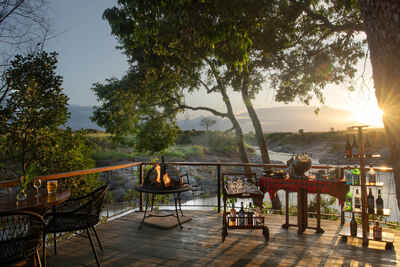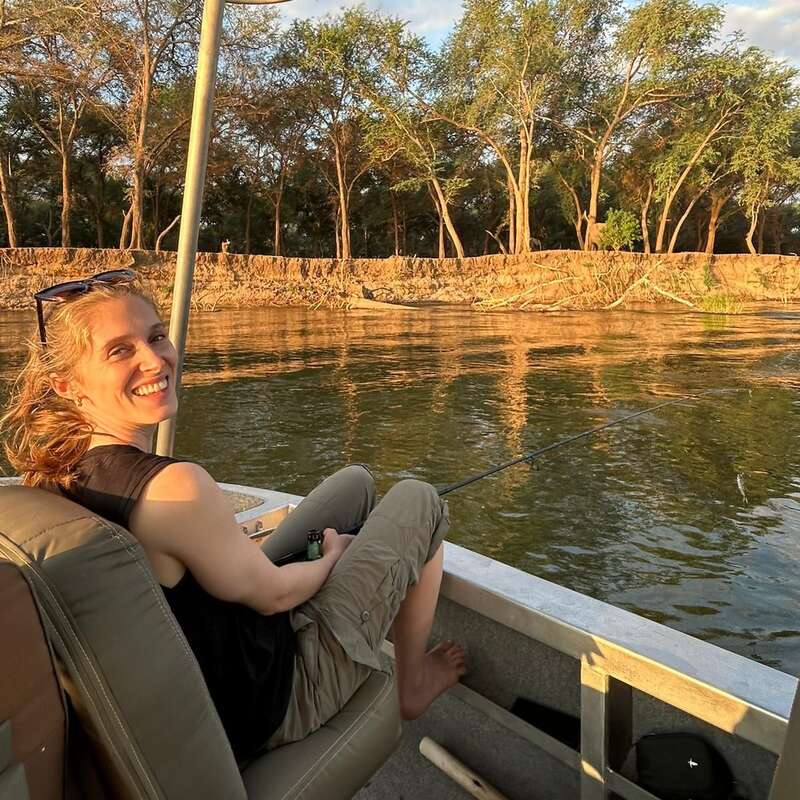About Rekero
A traditionally styled tented camp, Rekero is sited on the north bank of the Talek River, in a prime location ...
... in the centre of the Maasai Mara National Reserve in Kenya. It is just 3km upstream from the confluence of the Talek with the Mara, an important "bottleneck" area favoured by predators. During the migration season (roughly July to October) the plains around the camp are thick with wildebeest.
Rekero has one of the most central locations in the Mara but this also makes the surrounding area an attractive target for wildlife-viewing vehicles from other camps, and the area can be very busy in the migration season. Nevertheless, with Rekero's high level of comfort, friendly team, and tents well spaced for privacy, we found it easy to relax here. It's run by an enthusiastic and knowledgeable team and we were impressed by the service and guides' expertise. The large number of repeat guests is indicative of Rekero's dedication to offering a first-class safari experience, which it does seamlessly, justifying its relatively high rates.
Our view
Rekero has one of the most central locations in the Mara but this also makes the surrounding area an attractive target for wildlife-viewing vehicles from other camps, and the area can be very busy in the migration season. Nevertheless, with Rekero's high level of comfort, friendly team, and tents well spaced for privacy, we found it easy to relax here. It's run by an enthusiastic and knowledgeable team and we were impressed by the service and guides' expertise. The large number of repeat guests is indicative of Rekero's dedication to offering a first-class safari experience, which it does seamlessly, justifying its relatively high rates.
Accommodation
7 standard, 2 family tents
Children
Best for 10+
Open
1 June to 31 March
Activities

4WD Safari

Birdwatching

Cultural excursion

Hot air ballooning

Private activities
Traveller reviews of Rekero
31 real, un-edited reviews from Expert Africa's travellers.
Arrived 26 Sep 2024, 3 nights
"Rekero review"
Overall rating: Excellent
Arrived 8 Sep 2024, 4 nights
"Rekero review"
Overall rating: Excellent
Arrived 28 Aug 2024, 4 nights
"Rekero review"
Overall rating: Excellent
Arrived 6 Sep 2023, 3 nights
"Introduction to the Bush"
Overall rating: Excellent
Arrived 23 Aug 2023, 3 nights
"Rekero review"
Overall rating: Excellent
Arrived 1 Dec 2021, 2 nights
"Incredible location"
Overall rating: Excellent
Arrived 18 Nov 2021, 2 nights
"Wow! Hope to return one day!"
Overall rating: Excellent
Arrived 20 Oct 2021, 4 nights
"Rekero review"
Overall rating: Excellent
Arrived 1 Sep 2019, 3 nights
"Rekero review"
Overall rating: Excellent
Arrived 29 Aug 2019, 3 nights
"Great stay at Rekero"
Overall rating: Excellent
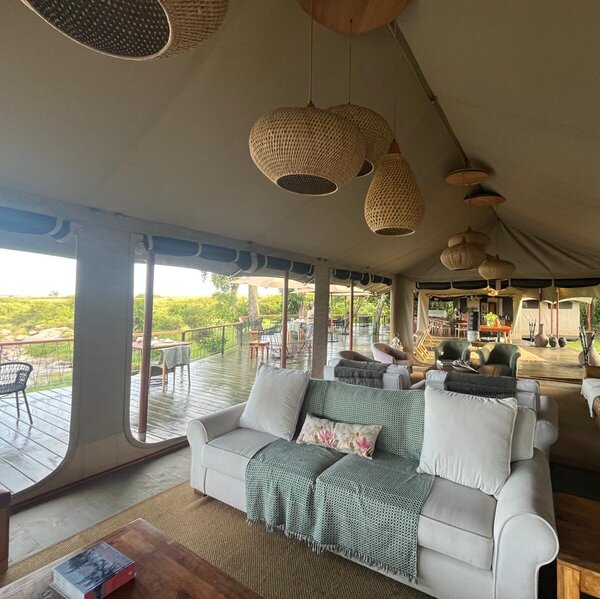
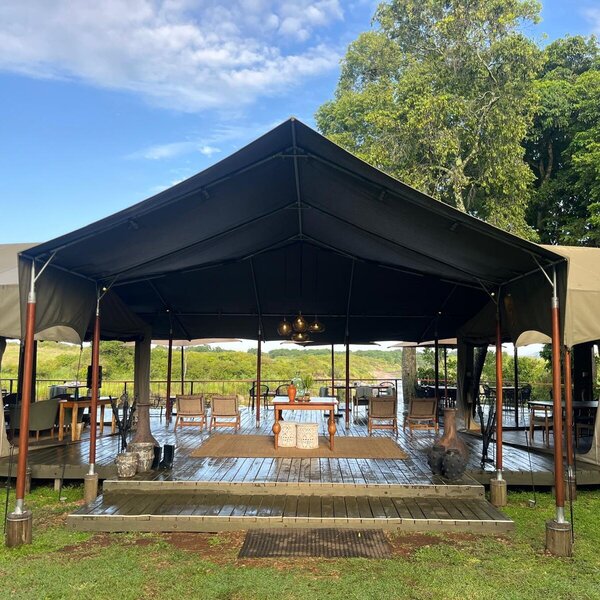
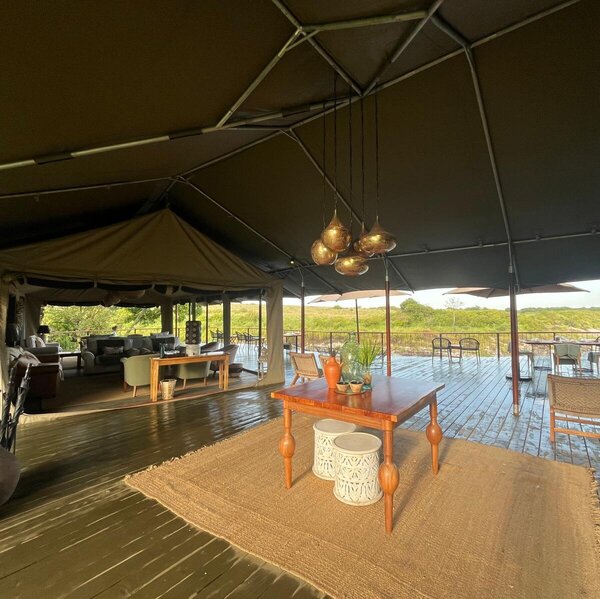
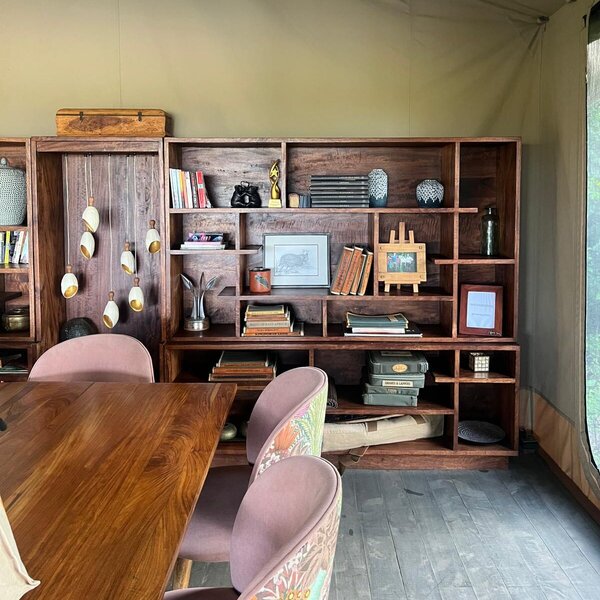
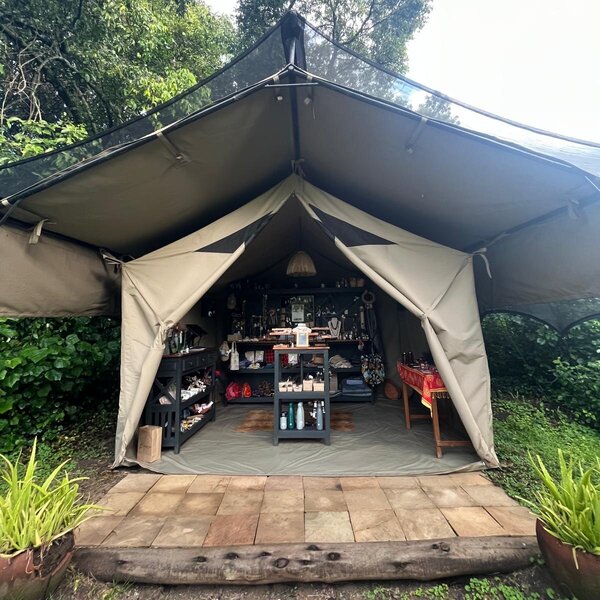
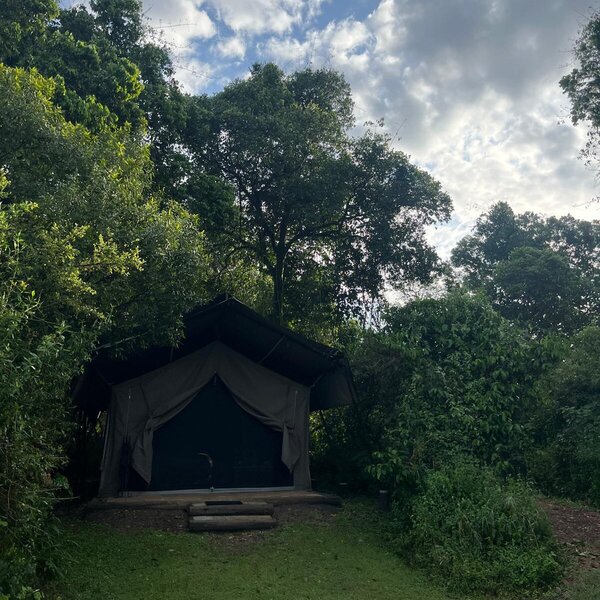
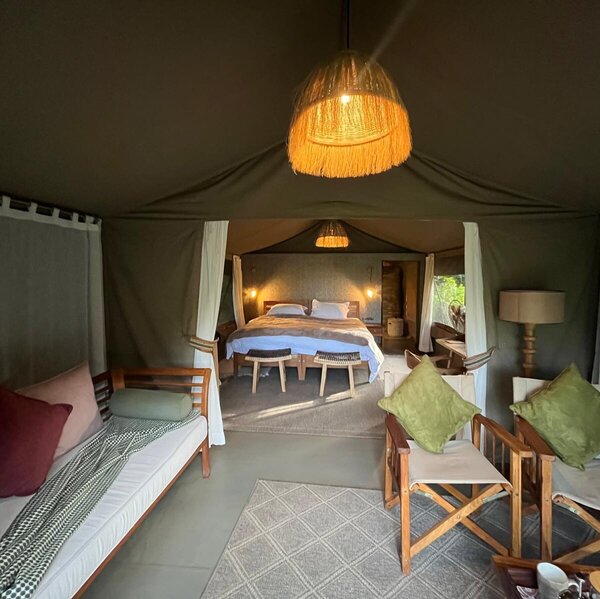
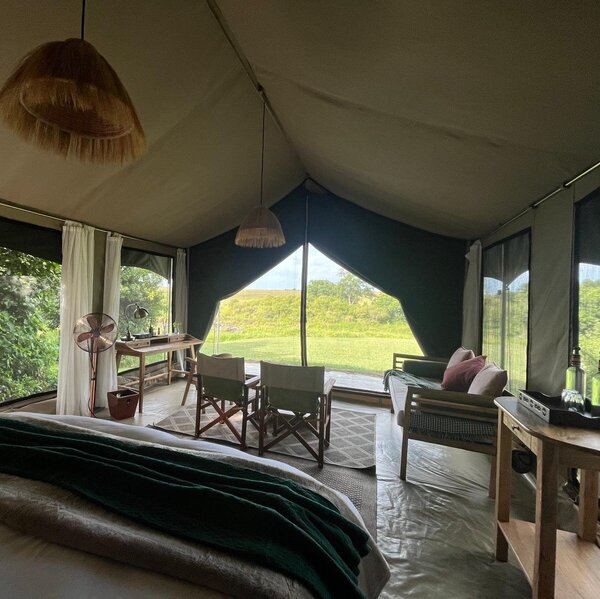
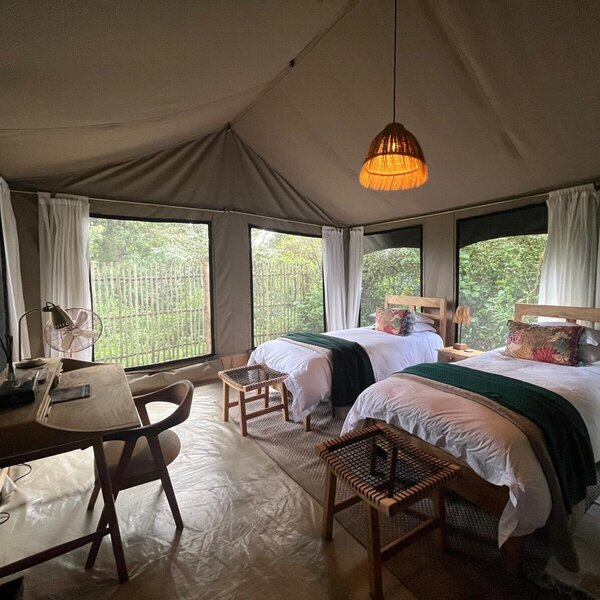

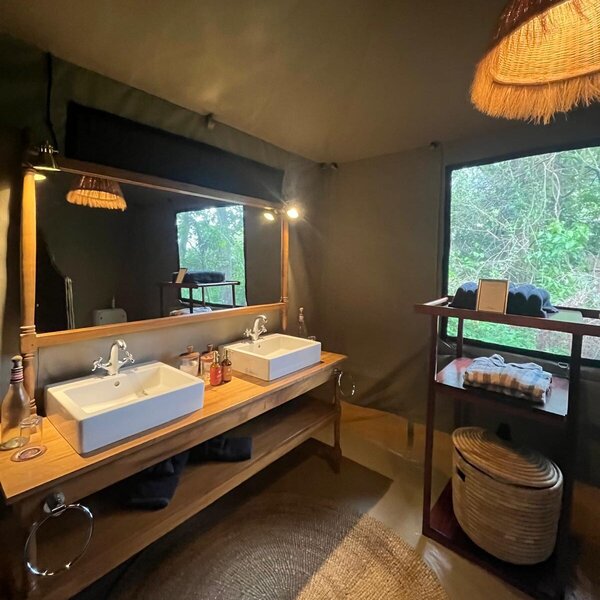
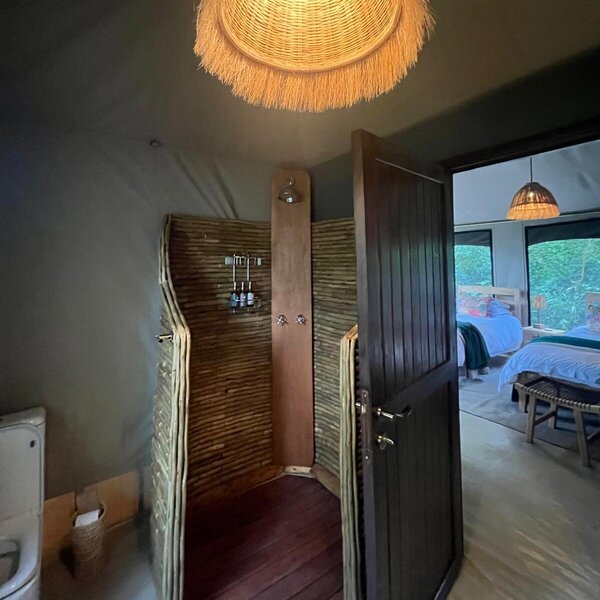
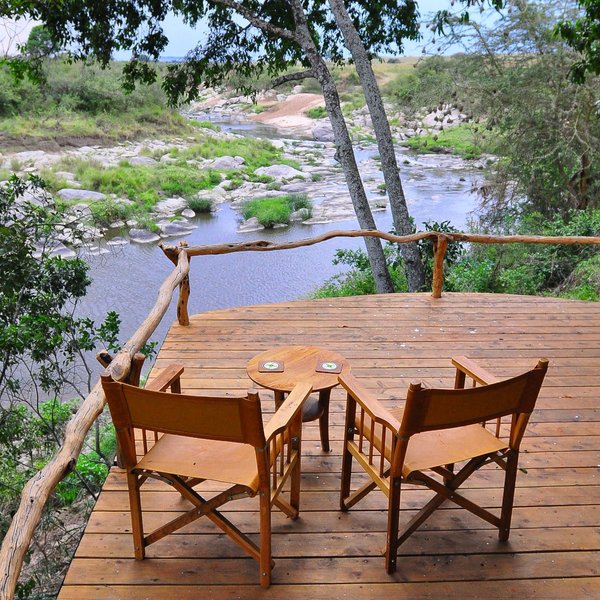
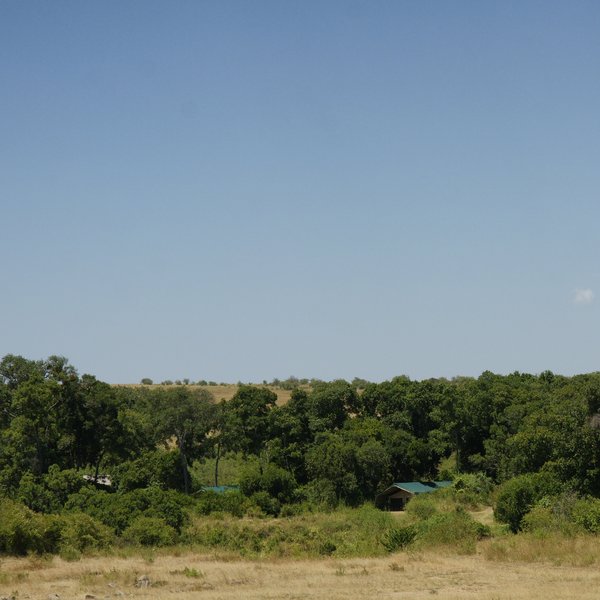
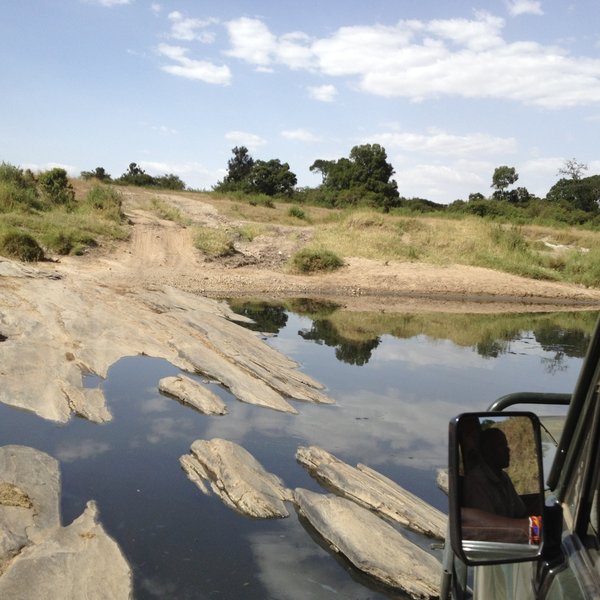
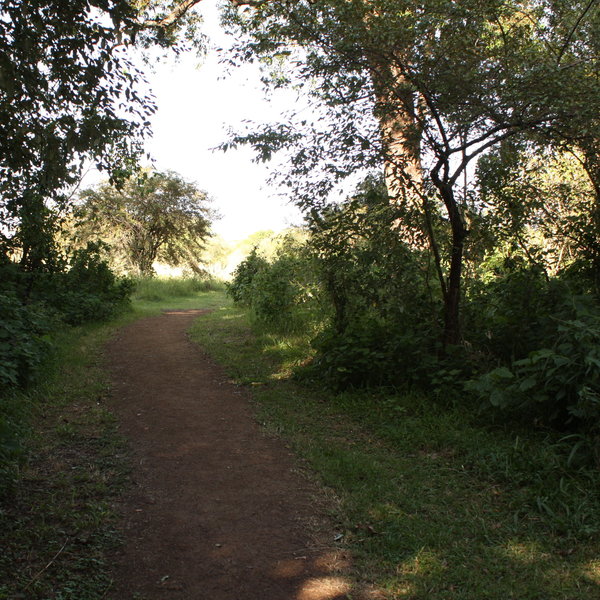
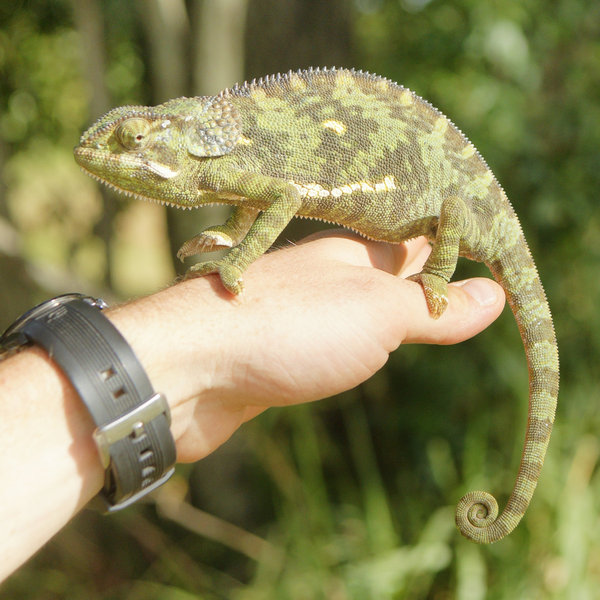
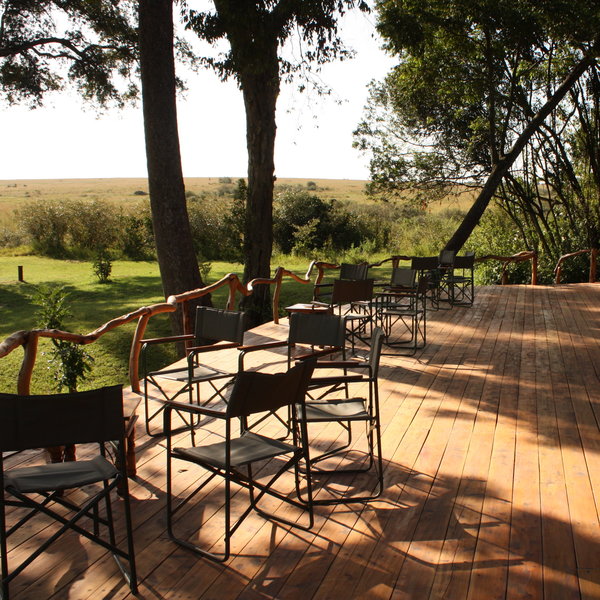
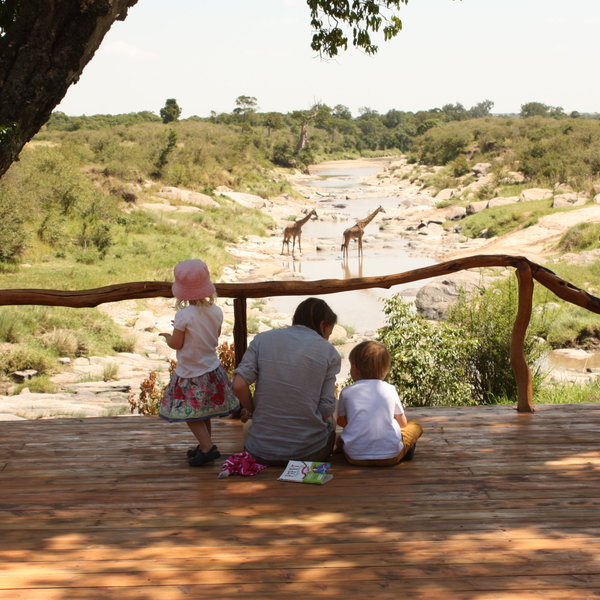
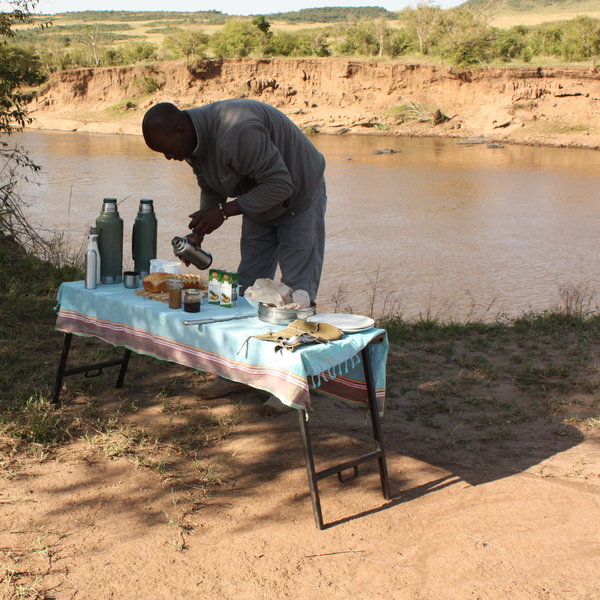
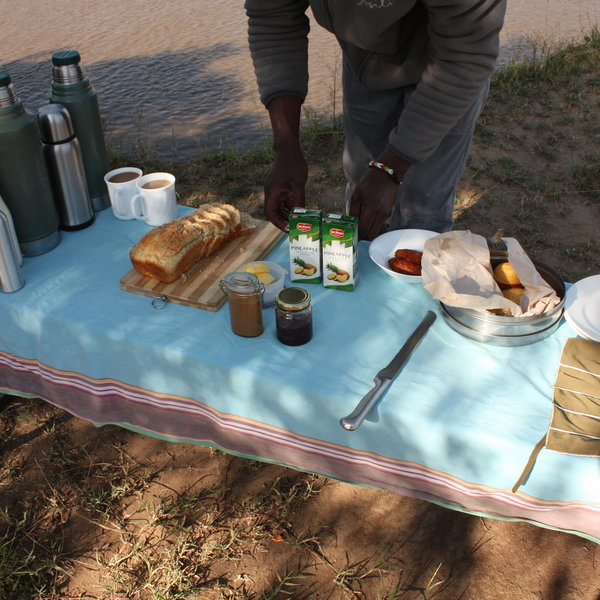
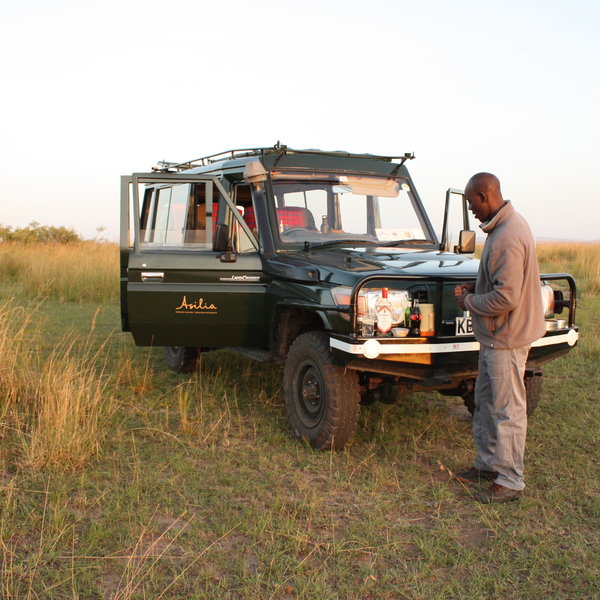
Expert Africa's gallery
When we travel we take lots of photos ourselves to give you a real and un-edited view of the safaris. See our 48 pictures and 1 videos of Rekero to get the candid view.
View gallerySafaris visiting Rekero
Just ideas, we'll always tailor-make a trip for you
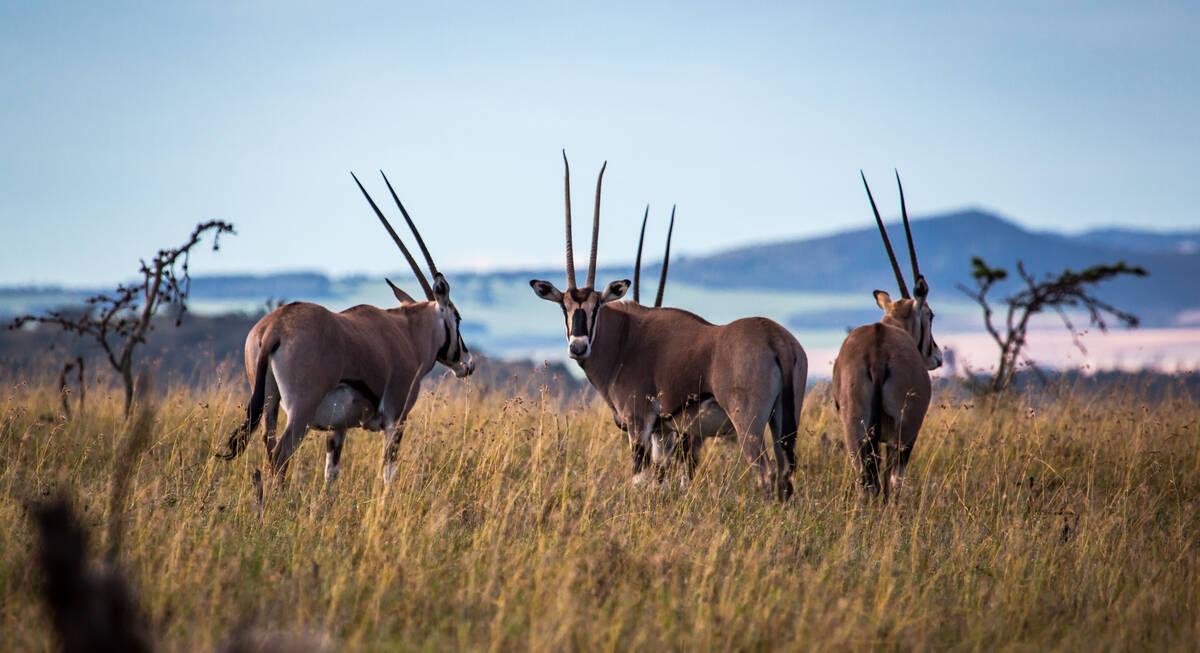
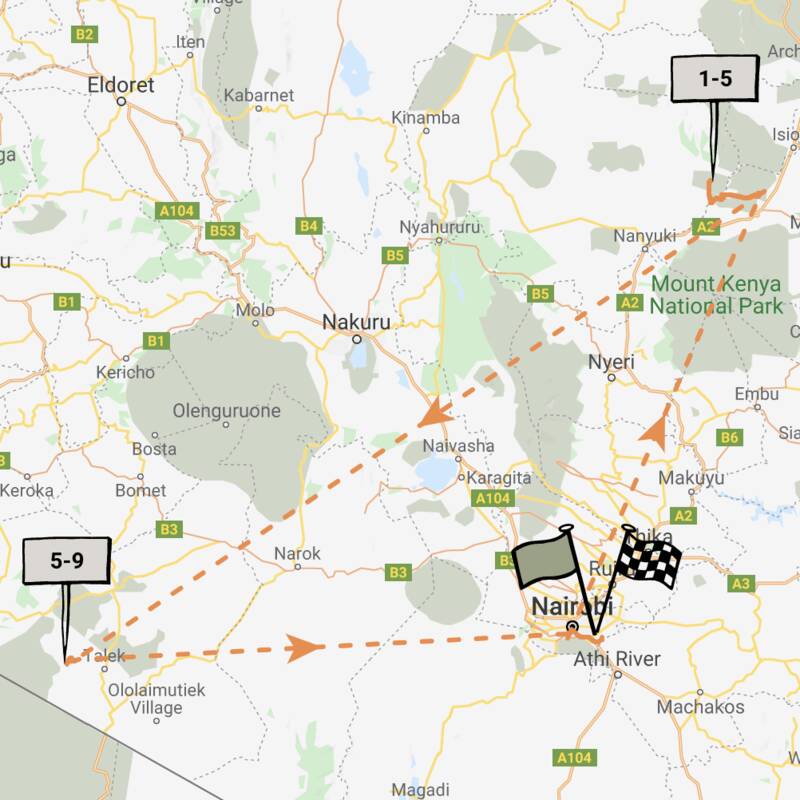
Golden Jackal Fly-in Safari
8 days • 2 locations • 1 country
NAIROBI AIRPORT TO NAIROBI AIRPORT
A contrasting safari of a lodge and a tented camp, with action-packed activities in Laikipia and wildlife-filled game drives in the Maasai Mara, offers a consistently high-quality experience.
Visiting Laikipia, Maasai Mara
US$11,200 - US$14,130 per person
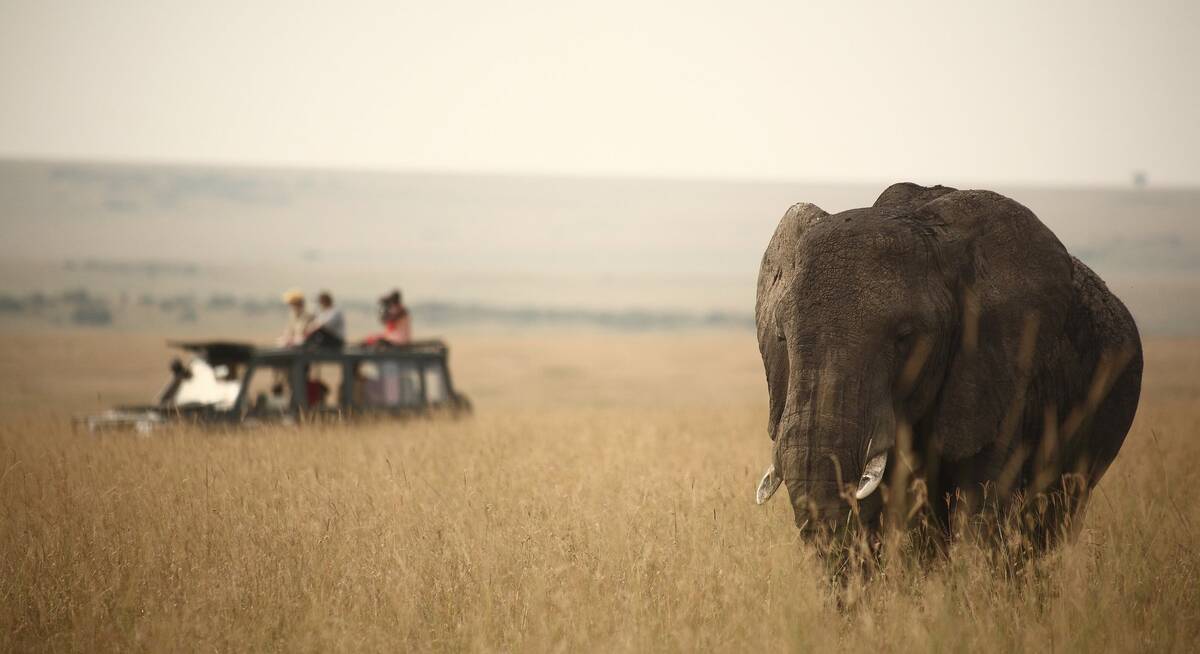
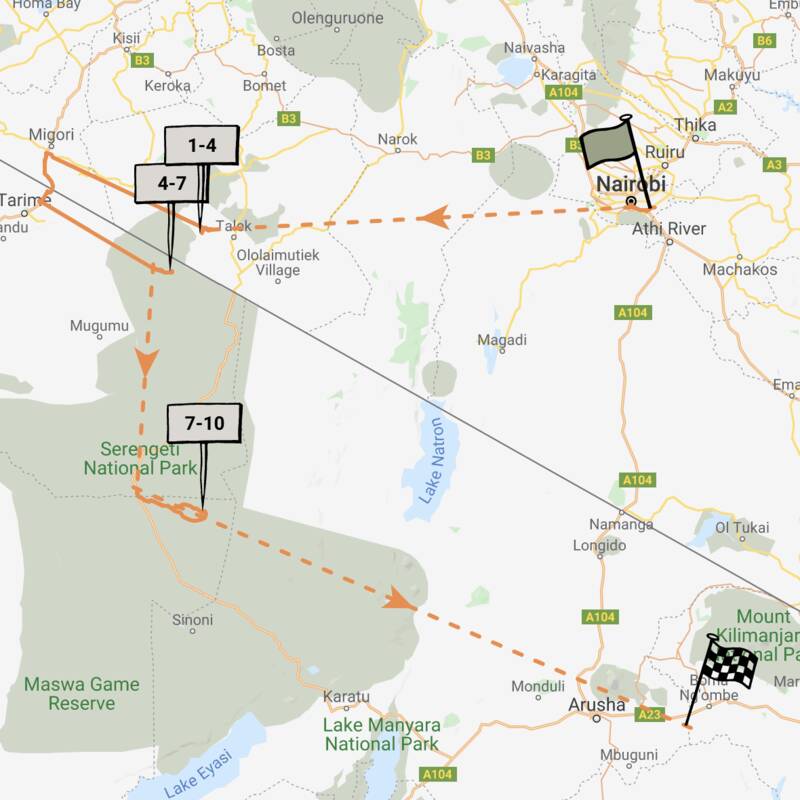
Martial Eagle Fly-in Safari
9 days • 3 locations • 2 country
NAIROBI AIRPORT TO KILIMANJARO AIRPORT
This stylish fly-in safari visits two of Africa’s most iconic parks, the Maasai Mara National Reserve in Kenya and Tanzania's Serengeti National Park.
Visiting Serengeti, Maasai Mara
US$12,720 - US$17,740 per person
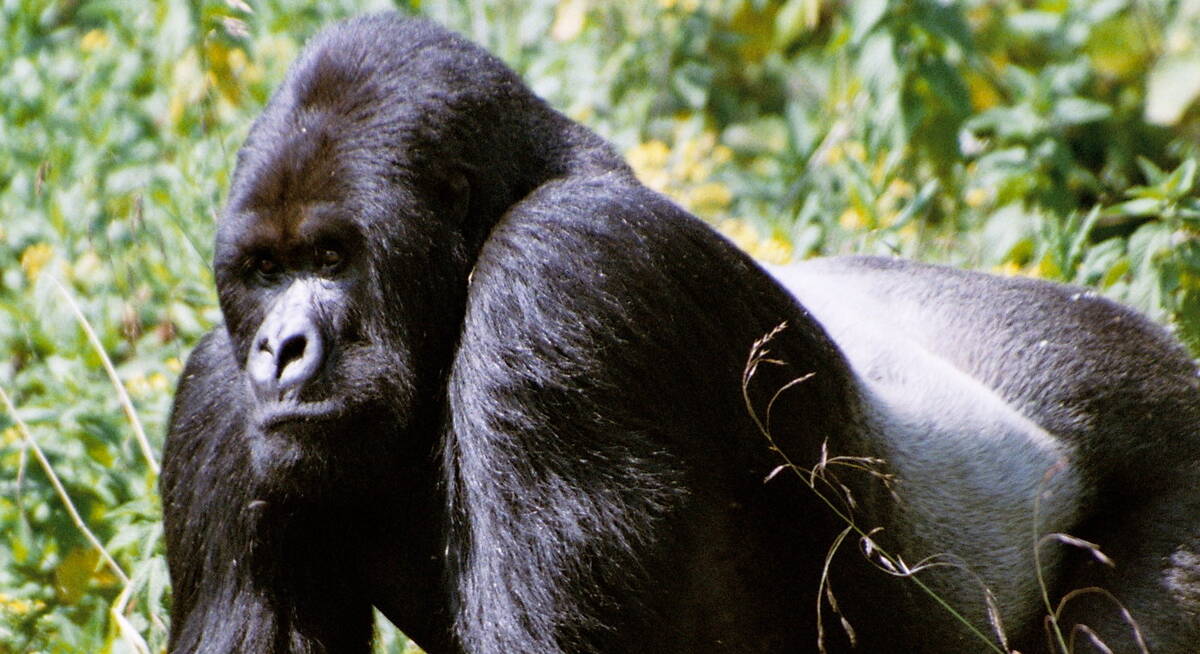
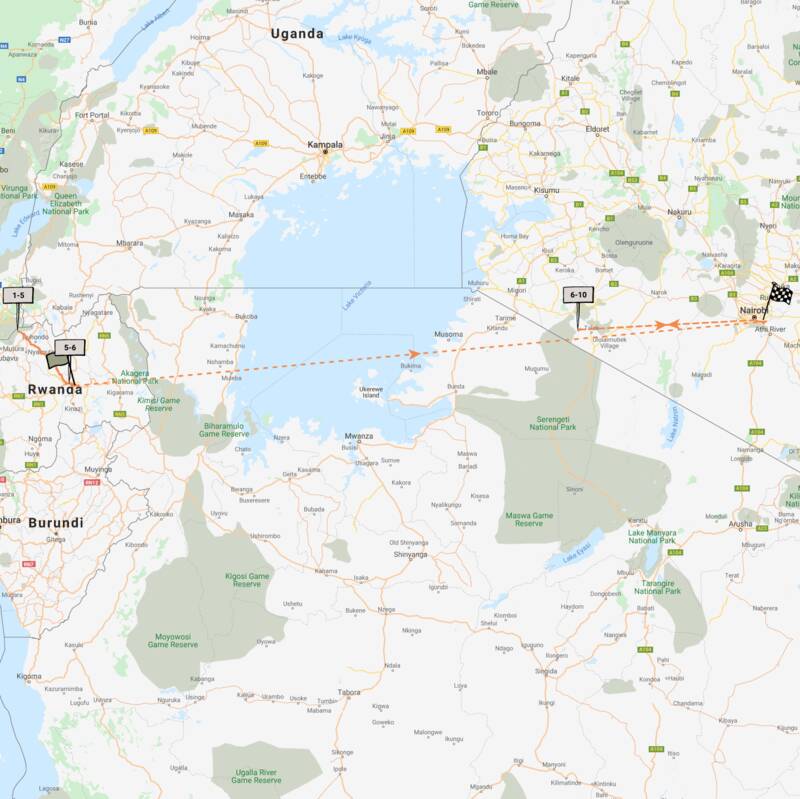
Gorillas and Maasai Mara Safari
9 days • 3 locations • 2 country
KIGALI AIRPORT TO NAIROBI AIRPORT
This trip combines two of Africa's most unforgettable wildlife experiences – Rwanda's mountain gorillas and Kenya's Maasai Mara.
Visiting Kigali, Volcanoes and 1 other area
US$11,400 - US$13,520 per person
Rekero: Our full report
A traditionally styled tented camp, Rekero is sited on the north bank of the Talek River, in a prime location ...
... in the centre of the Maasai Mara National Reserve in Kenya. It is just 3km upstream from the confluence of the Talek with the Mara, an important "bottleneck" area favoured by predators. During the migration season (roughly July to October) the plains around the camp are thick with wildebeest.
One of three properties in the Mara region now owned by Asilia, Rekero was first set up in 1999. Located on the southern boundary of the Musiara sector of the national reserve, it faces the Sekenani sector across the Talek River, with a ford allowing easy access between the two (except when the Talek is in flood). This gives guests outstanding access to the bush, plains, and marshes of both sectors. On a previous stay, we were greeted by a lioness crossing the riverbed carrying a young lion cub.
Spaced well apart along the river, Rekero's nine tents stand in cleared bush in the shade of thick forest, facing south over the Talek to the wooded banks on the far side. Each of the tents is accessed by a private path leading from a main footpath and the thick foliage provides a great deal of privacy.
The tents are a good size, though not enormous. Tall trees offer some shade and double fly sheets help to keep down daytime temperatures. There's plenty of ventilation from large screened windows and thick bush growing close to the tents allows the screen covers to be kept unrolled without affecting privacy. The décor is stylishly understated, using muted greens, fawns, and browns with beige rugs and matts lining the floor, and pink cushions adding a pop of colour to the day beds.
The front part of each tent forms a good-sized, fully screened vestibule, furnished with a day bed, a pair of canvas director's chairs, and a card table. With the front screens open, it's easy to wile away an hour or two watching the comings and goings on the tent's front lawn, leading down to the river. The main bedroom contains a large, comfortable double bed (with the option of twin beds), a chair and writing table with mirror, and a second small table where drinking water and extra blankets and cushions can be found for chillier evenings. The spacious bathroom is furnished with a double washstand with artisanal toiletries, shelving units, and a hanger rail equipped with thick robes, slippers, and complimentary wellies, and a wood-floored shower area and flush toilet. These latter are discreetly concealed behind curved wooden partitions that offer privacy while maintaining the bathroom's open-air feel.
Tents #1 and #2 are spacious family tents, designed in the same style as tents #3 to #9 but with deep blue throws and floral cushions on the beds. They are the closest to the main areas and sleep five (or six at a pinch), with a twin and double bedroom connected by a central lounge with sofa, coffee table, and armchairs. Both bedrooms are ensuite with twin washbasins, rush matting on the floors, and the same complimentary products, bathrobes, and wellies.
The small gift shop is located in the natural tropical gardens just before the main area, offering crafts and souvenirs made by local women. As with its sister-camps Encounter Mara and Naboisho Camp, the gift shop is unstaffed and runs on an honesty system, with proceeds supporting the Maa Trust.
Rising up a couple of wooden steps, you enter Rekero's main areas where a central deck connects a dining room and lounge area. The lounge tent is spacious and divided into two seating areas, with comfortable cream and leather sofas draped in pale green throws and floral cushions, spaced around coffee tables and angled to make the most of the views over the Talek River. A library area is connected to the back of the lounge with pale pink chairs spaced around a large wooden table and books, photographs, and games lining a decorative shelving unit. Private dinners are often arranged here, where atmospheric lighting creates a soft glow beneath the canvas walls and ceiling.
To the other side of the central area, the dining tent features a long wooden table where sociable evening meals often take place. The wall is lined with wooden cabinets and dressers decorated with plants and candles, and woven light fixtures hang from the ceiling in unique shapes and sizes.
Beyond the lounge and dining areas is an expansive deck that overlooks the Talek River. Lunch will often be enjoyed here, on the individual tables dotted across the decking, and breakfasts too, if not enjoyed as a picnic out in the bush during the morning activity. During our last visit, we enjoyed a delicious breakfast spread of yoghurts, fruit, and muesli followed by a hot breakfast cooked to order, and watched hippos move through the grass below on their way back to the river.
The evening fire, surrounded by director's chairs, is either lit on the lawn or down on the 'beach' next to the river.
Rekero's focus is wildlife-watching, and most activities come under that heading, with morning and late-afternoon wildlife drives the main excursions on offer. Due to its central location in the Mara ecosystem and its excellent guiding staff, Rekero has a well-established reputation for delivering outstanding wildlife-viewing.
Because the camp is within the Maasai Mara National Reserve, walks and night drives cannot be offered from Rekero, although both can be done when staying at Rekero's sister camps Naboisho Camp and Encounter Mara Camp in the nearby Mara Naboisho Conservancy. Some travellers who have four nights or more in the Mara region choose to split their time between Rekero and Naboisho or Encounter Mara to enjoy this wealth of activities.
Other activities at camp include free nature walks along the pathways around the camp, bow-and-arrow making and practice for children or, further afield, excursions to visit the Maa Trust to learn about their community projects. These include programmes such as youth empowerment, vocational training, beekeeping and honey production, brick-making, FGM education, healthcare, water and sanitation, and their famed beadwork project. This excursion can often be paired with a visit to another of the camp's partners, including the Maa Predator Conservation Programme and Kenyan Wildlife Trust, both of which are located just next door to The Maa Trust. A private vehicle needs to be arranged for these excursions at additional cost, and a project donation of $10 per person is requested to visit The Maa Trust.
Additionally, it is possible to visit The Mara Elephant Project from Rekero as part of a full-day trip that is often paired with a visit to the Ol Chorro Rhino Sanctuary. The visit includes a presentation as well as a tour of headquarters to gain insight into bushmeat snares, spears and arrows collected from the field, and to see elephant skulls and collars. Further immersive experiences with The Mara Elephant Project include learning about their drones, joining local farm researchers to understand elephant-friendly farming initiatives and how to mitigate human-wildlife conflict, joining an elephant researcher to visit the project's headquarters in Lemek Conservancy to support with research, and conservation flights. Pre-booking is required for these activities, so please speak to an Expert Africa specialist to learn more about the experiences and associated costs, if of interest.
Activities
4WD Safari
Birdwatching
Cultural excursion
Hot air ballooning
Private activities
Families & children
- Attitude towards children
- Rekero feels relaxed and unpretentious and this can work well for older children.
- Property’s age restrictions
- Rekero welcomes children over the age of five.
- Special activities & services
- Special activities & services:
E.g. child-minding, kids clubs, meals, nature walks through camp.
There are nature walks for children around camp, and down to the riverside, as well as bow-and-arrow making and practice. Informal football or other games can be played on the lawns (with guests' own equipment), and board games can be found in the library.
Children's meals can easily be provided. Babysitting is not available in the daytime, although an askari (guard) can be posted near the tent at night to allow parents to have dinner without the children. - Equipment
- No specific children’s equipment is available, but all requirements can be organised.
- Generally recommended for children
- Although Rekero happily welcomes children above the age of five, we don't think of the camp as particularly child-friendly or ideal for families. Many guests are serious photographers and wildlife watchers, so family guests will need to keep younger members reasonably quiet most of the time. Guests often bring nannies and the majority of family guests are local residents.
- Notes
- Parents/carers will need to keep an eye on young children at all times because of the proximity of the river and wild bush close to camp.
Food & drink
- Usual board basis
- Full Board & Activities
- Food quality
- Rekero's food is well prepared and creative. Early morning tea or coffee is brought to your tent at a prearranged time, depending on when you want to start your first wildlife drive.
Breakfast is often a picnic by the Mara River during an extended drive, and includes the full range of cereals, fruit and yoghurt, with freshly baked bread, muffins, bacon and egg quiche and cold sausages. Alternatively, breakfast in camp is normally served on the deck, with a full English-style cooked breakfast available as well as fruits, yoghurts and muesli.
On our most recent visit to Rekero we enjoyed a lunch of chicken curry, rice, chapattis and a range of salads. This was followed by a sticky almond square.
Afternoon tea, coffee and cake are available at 4.00pm and pre-dinner drinks and nibbles are served around the fire.
The three-course set dinner is normally served in the mess tent, as a convivial group meal hosted by the managers, who also help to serve. During our visit we had a feta cheese and watermelon salad, this was followed by a roast butternut squash tagliatelle. Desert was a delicious mango cheesecake. Private dining arrangements can easily be made if you prefer and the menu can be altered to suit your dietary requirements. - Dining style
- Mixture of group dining and individual tables
- Dining locations
- Indoor and Outdoor Dining
- Further dining info, including room service
- Yes, frequently arranged
- Drinks included
- All drinks are included apart from premium wines and champagne. Each tent is supplied with drinking water.
Our travellers’ wildlife sightings from Rekero
Since mid-2018, many of our travellers who stayed at Rekero have kindly recorded their wildlife sightings and shared them with us. The results are below. Click an animal to see more, and here to see more on our methodology.

100% success

100% success

100% success

100% success

100% success

100% success

100% success

100% success

86% success

71% success

57% success

8% success

0% success

0% success

0% success

0% success
Getting there
- Location
- Maasai Mara National Reserve, Kenya
- Ideal length of stay
- We recommend a minimum of three nights at Rekero, allowing time for two or three morning and two or three evening wildlife drives and enabling you to become familiar with the plains and riverine forest of the national reserve.
For a slightly different environment, you could combine a stay at Rekero with two or three nights at the co-owned Naboisho Camp, around 1.5 hours' drive away in the Naboisho Conservancy, where there are fewer visitors, a greater range of activities and similarly spectacular wildlife. - Directions
- The flight from Nairobi to Ol Kiombo airstrip takes about an hour, then it's a 30-minute drive through the reserve to Rekero. After rain, if this route is impassable, you can fly to Musiara airstrip, a 45-minute drive from Rekero. Flights from Nairobi to Musiara also take about an hour.
- Accessible by
- Fly-and-Transfer
Special interests
- Birdwatching safaris
- Kenya birdwatching is good here for the variety of habitats in the vicinity. Birders will enjoy the privacy of their tent veranda with uninterrupted views across the Talek River, or the plentiful birdlife viewed from the central deck.
- See ideas for Birdwatching safaris in Kenya
- Photography safaris
- Near the confluence of the Mara and Talek rivers, Rekero is in the heart of the Mara reserve – ideally located to capture the migration. The standard of guiding is superb and a specialised photographic vehicle is also available to book.
- See ideas for Photography safaris in Kenya
- Cultural Experiences
- As with its Mara sister-camps, Rekero has strong links to the Maa Trust. A visit to the trust to learn about their many programmes can often be paired with a visit to the Mara Predator Conservation Programme and Kenyan Wildlife Trust.
- See ideas for Cultural Experiences in Kenya
- Wildlife safaris
- Rekero was the camp where Jackson Looseyia (of Big Cat Diary fame) first earned his spurs as a spotter and outstanding guide. More recently its first-class cat viewing made it a base for much of the filming of Disney's African Cats.
- See ideas for Wildlife safaris in Kenya
Communications
- Power supply notes
- Rekero is run almost entirely off solar power although there is a backup generator.
- Communications
- WiFi is available throughout the entire camp, in both the communal area and guest tents. There’s good cellphone network coverage, with a good Safaricom signal in camp too.
- TV & radio
- None
- Water supply
- Transported in
- Water supply notes
- Mineral drinking water is brought in from Nairobi.
Health & safety
- Malarial protection recommended
- Yes
- Medical care
- All Rekero’s vehicles are equipped with first-aid supplies and all staff take a first-aid course every six months. A trained nurse is available at the neighbouring camp, Mara Intrepids.
The flying doctor service can always be contacted and would fly to Ol Kiombo or Musiara airstrip. In addition, Asilia are covered by the South African insurance group SATIB, whose doctors are trained to offer remote first-aid advice and instructions in case of emergency. - Dangerous animals
- High Risk
- Security measures
- Each tent has a horn to alert your askari in the event of an emergency, and two-way radios are also provided to communicate with the central area. Hippos come ashore at night and the area is full of wildlife. During the day, housekeeping staff will escort guests or help with luggage. At night, askaris armed with traditional weapons patrol the camp and are always on hand to escort guests. The head askari has been with Rekero since it was first opened in 1999.
- Fire safety
- The Talek River forms a natural fire break. All tents have fire extinguishers and all staff know how to use them. There is a formal fire assembly point and staff have regular fire drills.
Useful info
- Disabled access
- On Request
- Laundry facilities
- Full Laundry Service is included in the cost. For cultural reasons ladies underwear is not accepted.
- Money
- Every guest tent has a safe where valuables can be locked. There is no currency exchange and few guests need to pay for anything apart from staff tips or curios.
- Accepted payment on location
- Cash payments may be made in US dollars, euros, pounds sterling or Kenyan shillings, although credit card payments are preferred. Visa and MasterCard are accepted with a 4% surcharge, but Amex is not accepted.
Plan and book your trip with Expert Africa
All of our trips are tailor-made, so we'll always adapt them to suit you. Talk to an Expert and let us plan and arrange your perfect trip.

Talk to an Expert
Call or email us now! We’ll match you with the Specialist in our team who is best suited to help you. Then together we can start planning your trip.

Set up your itinerary
Based on our experience and your ideas, your specialist will create a detailed, costed itinerary. We’ll refine it together, until we have a trip that you’re perfectly happy with.

Prepare for your trip
The same Specialist will make the seamless arrangements for your trip, send you detailed travel documents, and be available to answer any questions before you depart.

Travel with peace of mind
After you set off, you’ll be cared for by our partners in Africa, most of whom have worked with Expert Africa for decades. And if you ever need us urgently, we’re available 24/7.

When you return
We love to learn about your trip, and so will always be grateful if you’ve the time to give feedback to your Specialist when you return.
Rekero's location
Look closer at the environment and surroundings of Rekero.
Excursions from Rekero
Optional extra day-trips and excursions possible whilst you're staying at Rekero. Talk to us: these are usually best arranged before you go.
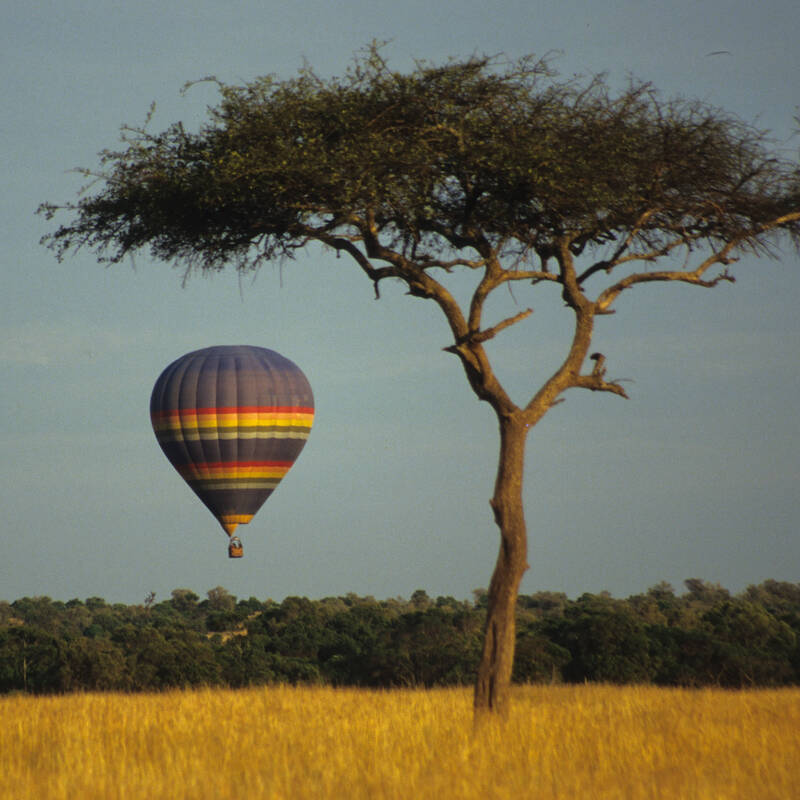
Balloon flight over the Mara
3 hours in total - morning only
With the sun rising over the Loita Hills, you scramble into the balloon basket for the start of a once-in-a-lifetime experience. You’re about to go drifting with the breeze above the trees and plains of one of the world’s greatest wildlife regions.
More about Balloon SafariOther lodges in Maasai Mara National Reserve
Alternative places to stay in this same area.
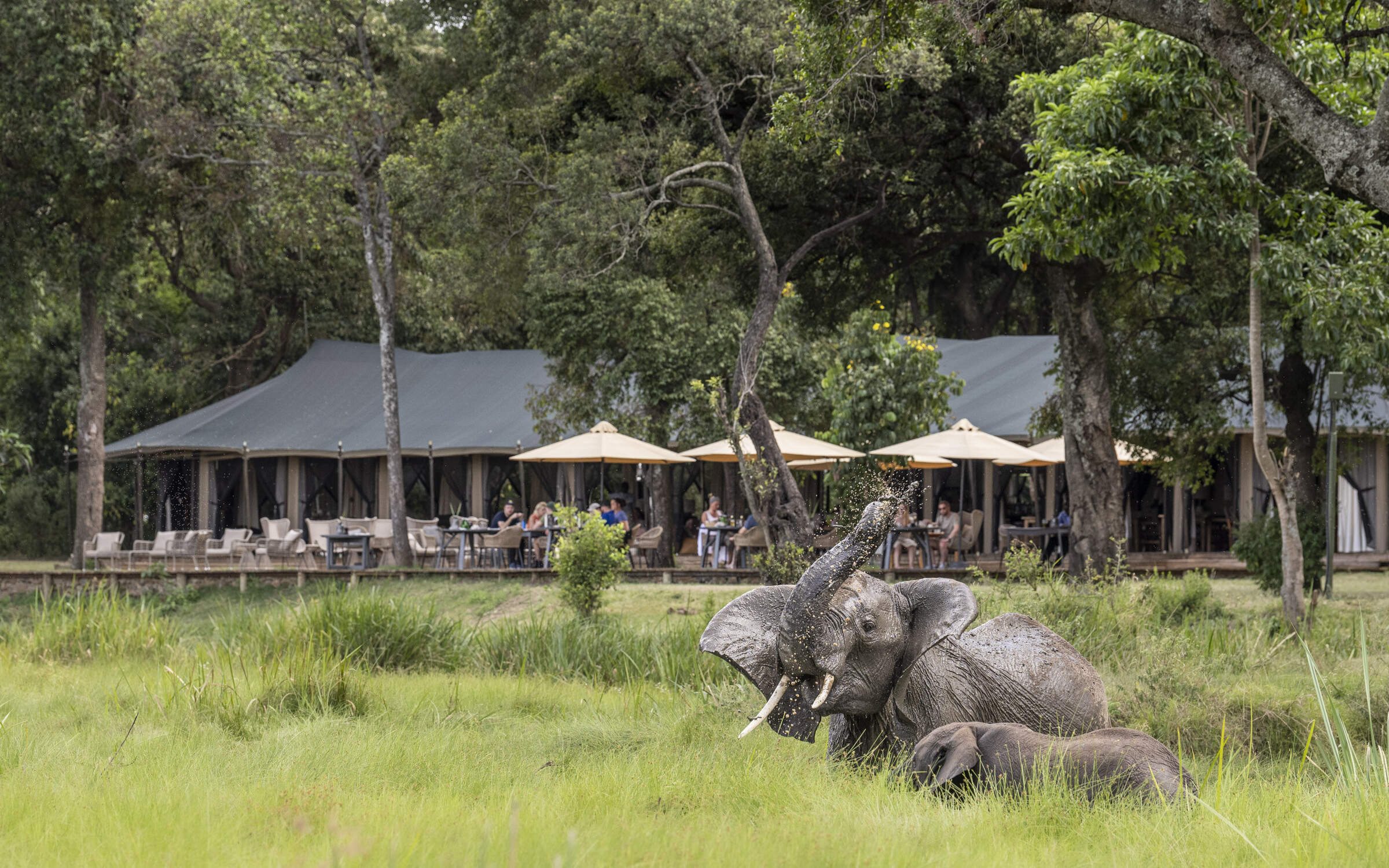
Little Governors'
Little Governors’ Camp sits by a swamp (an old oxbow of the Mara River) in the Mara Triangle sector of the Maasai Mara National Reserve. It has its own balloon-launching site.
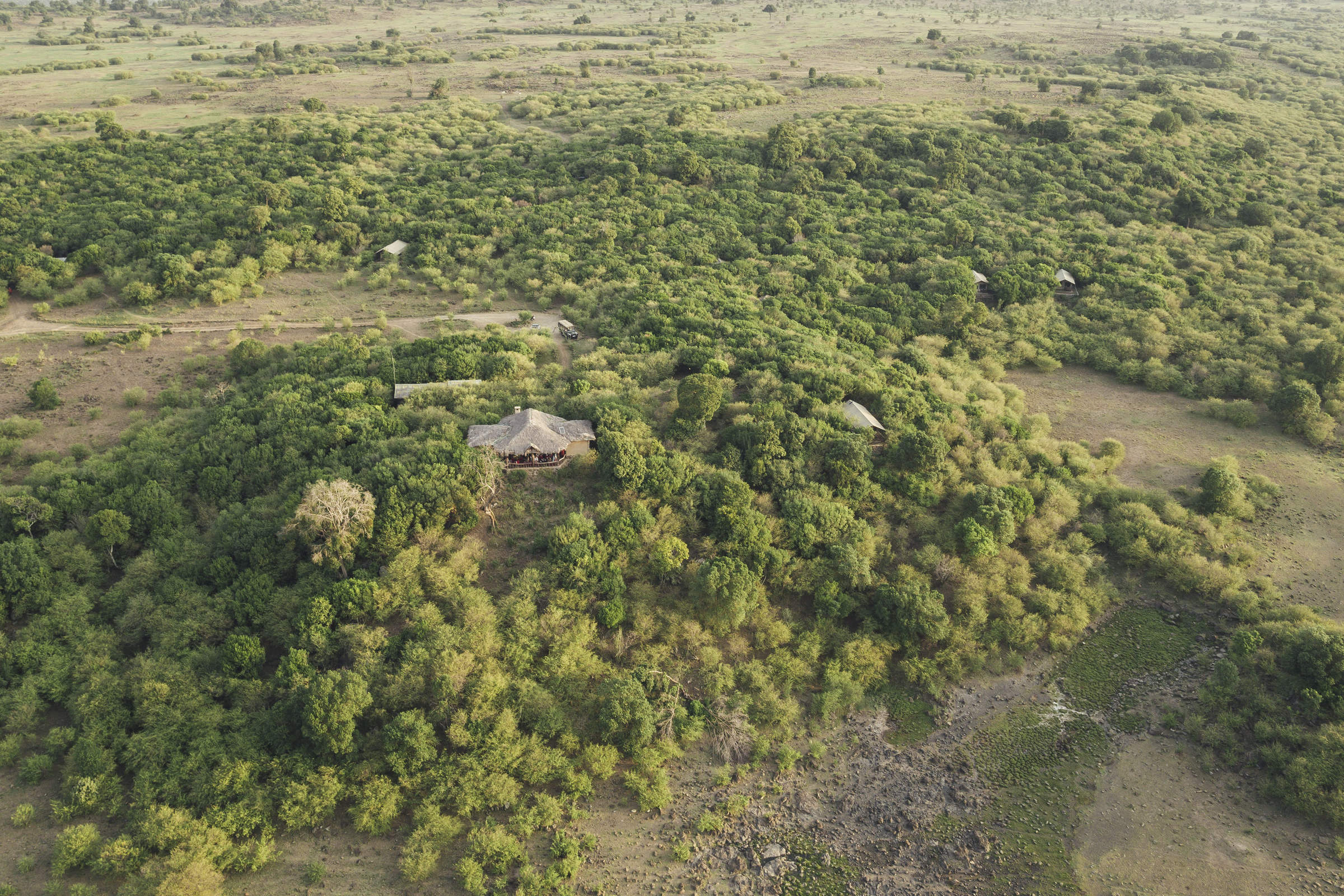
Tangulia Mara
Tangulia Mara is a rustic and traditional safari camp on the border of the Maasai Mara National Reserve owned by Jackson Looseyia of Big Cat Diary fame.
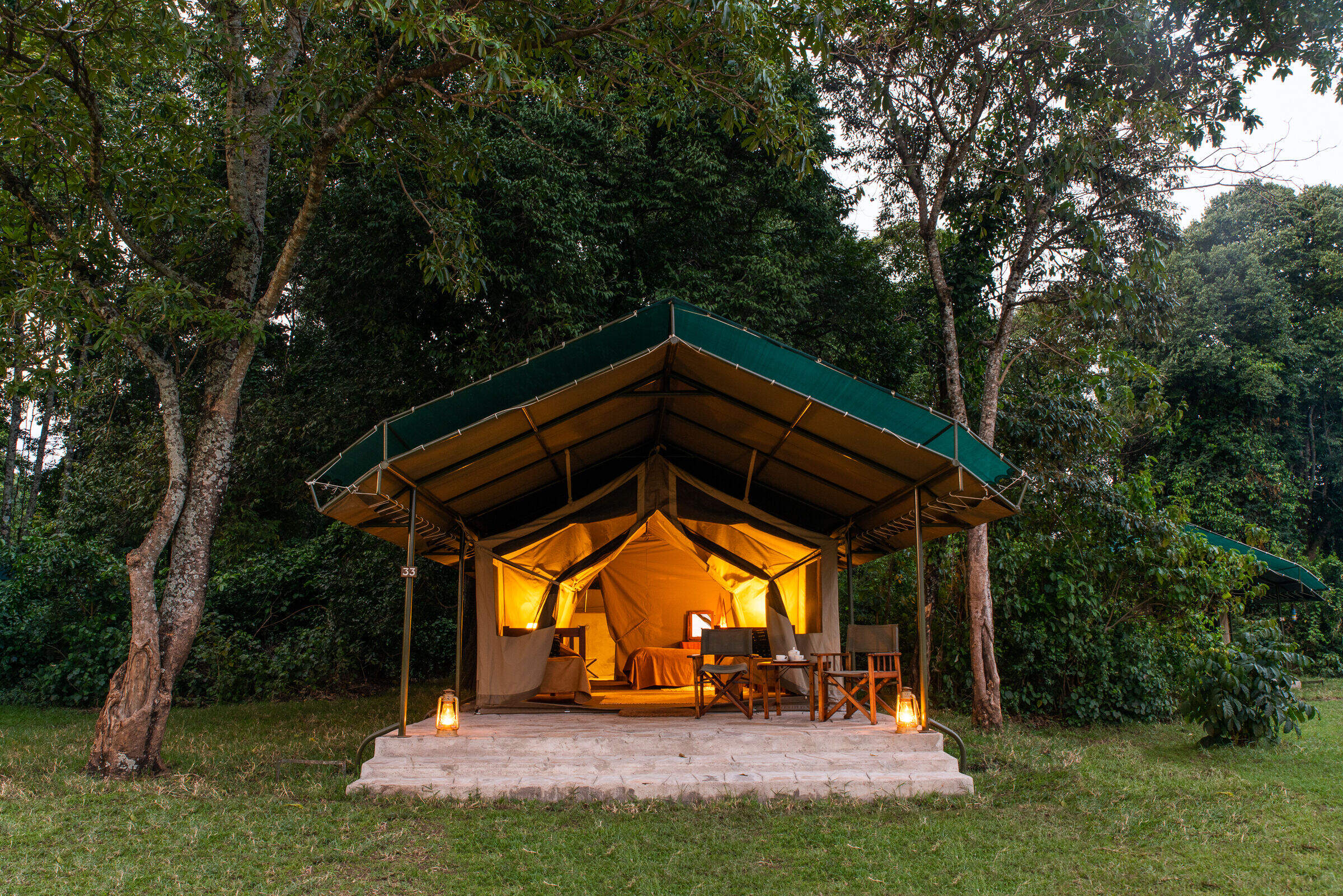
Governors' Camp
Governors' Camp is a large tented camp on the Mara River and one of the oldest in the Mara region, dating from 1972. Although unfenced, and regularly visited by elephants, the whole compound is always busy with human activity.
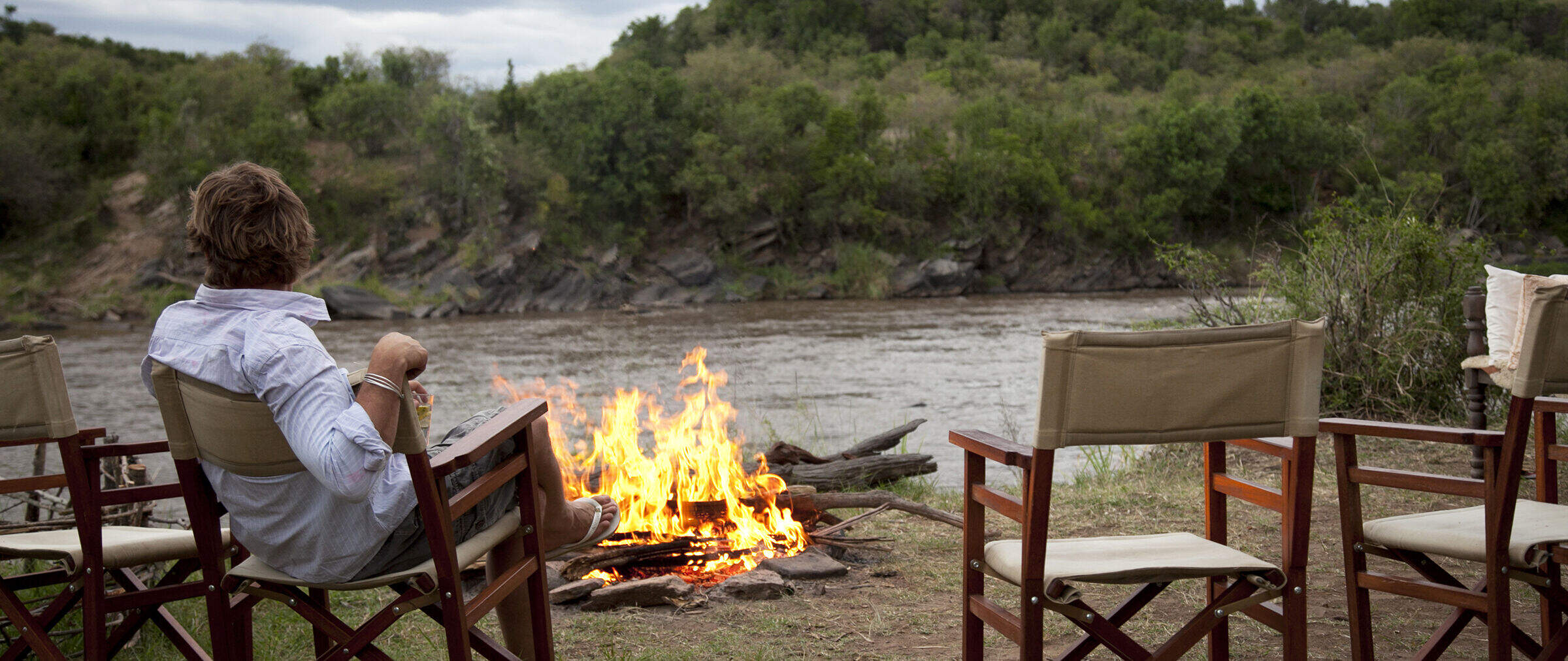
Serian Nkorombo
Serian Nkorombo is a luxury bush camp in the Musiara sector of the Maasai Mara National Reserve on the east side of the Mara River.
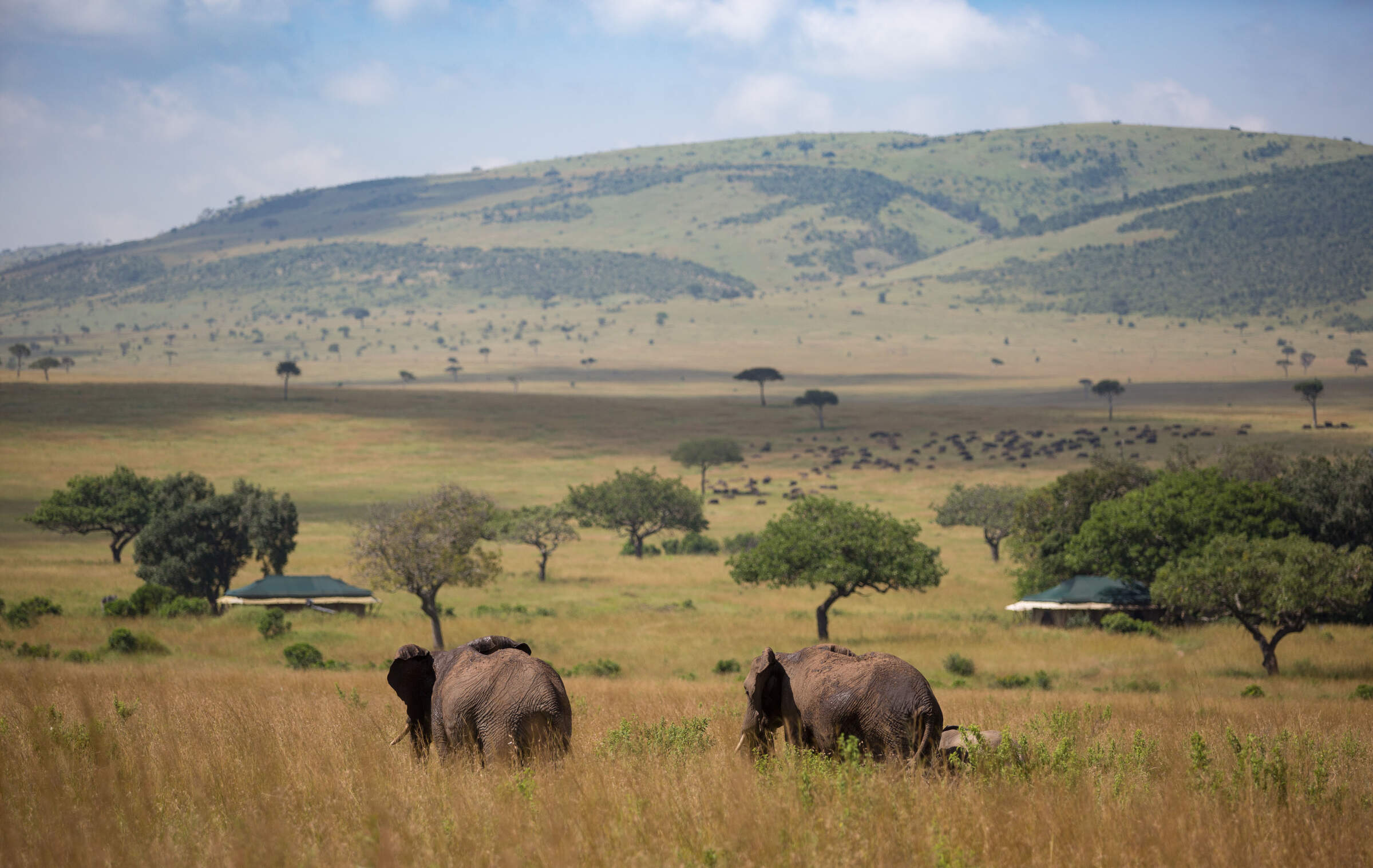
Sand River Camp
Luxury colonial-style tented camp on the banks of the Sand River close to the Tanzania border – a great spot to see the wildebeest migration.
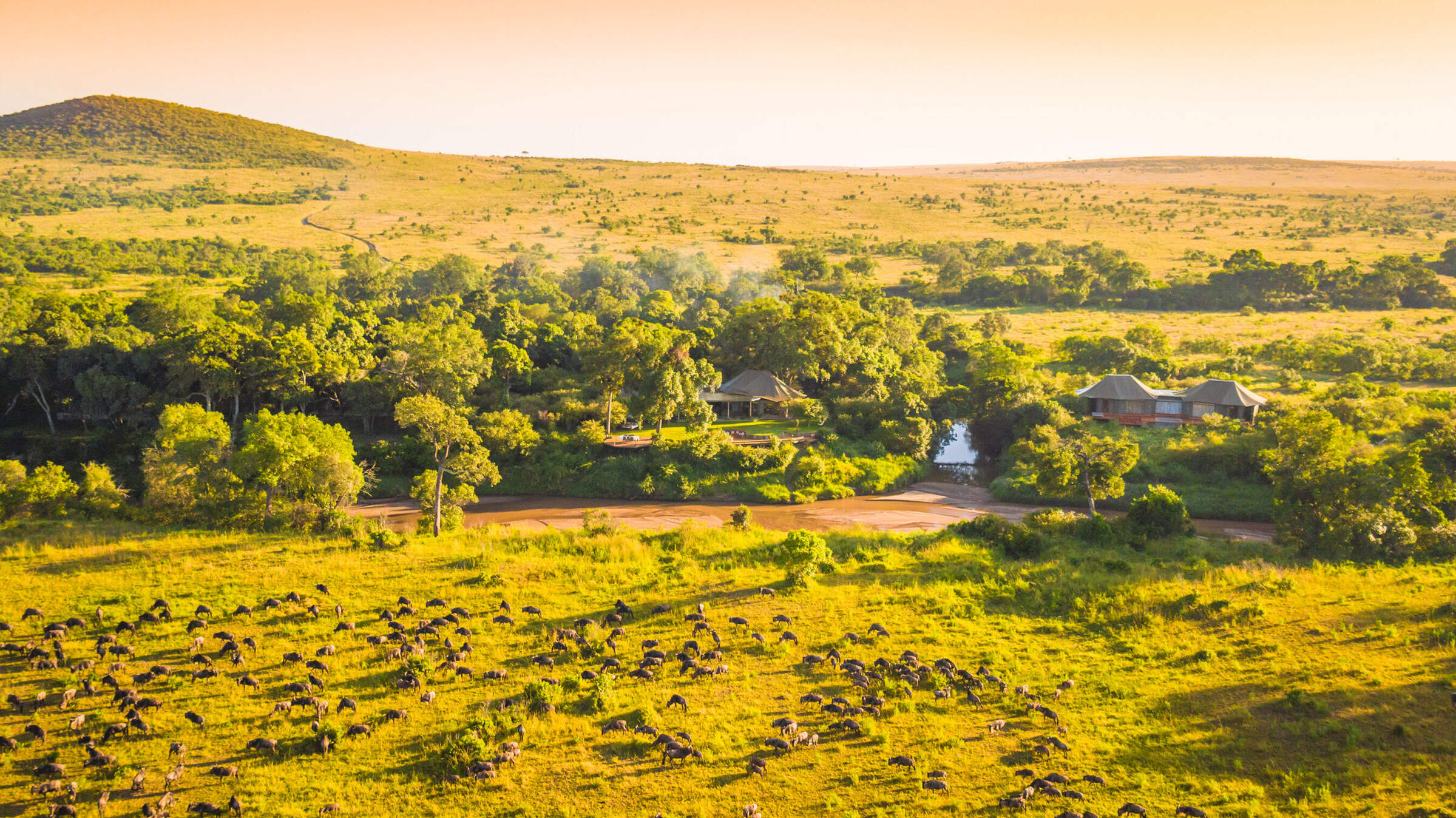
Sala's Camp
Sala’s Camp is a comfortable and intimate tented camp, with seven tented rooms, located on the banks of the Sand River, in the far south of the Maasai Mara National Reserve.
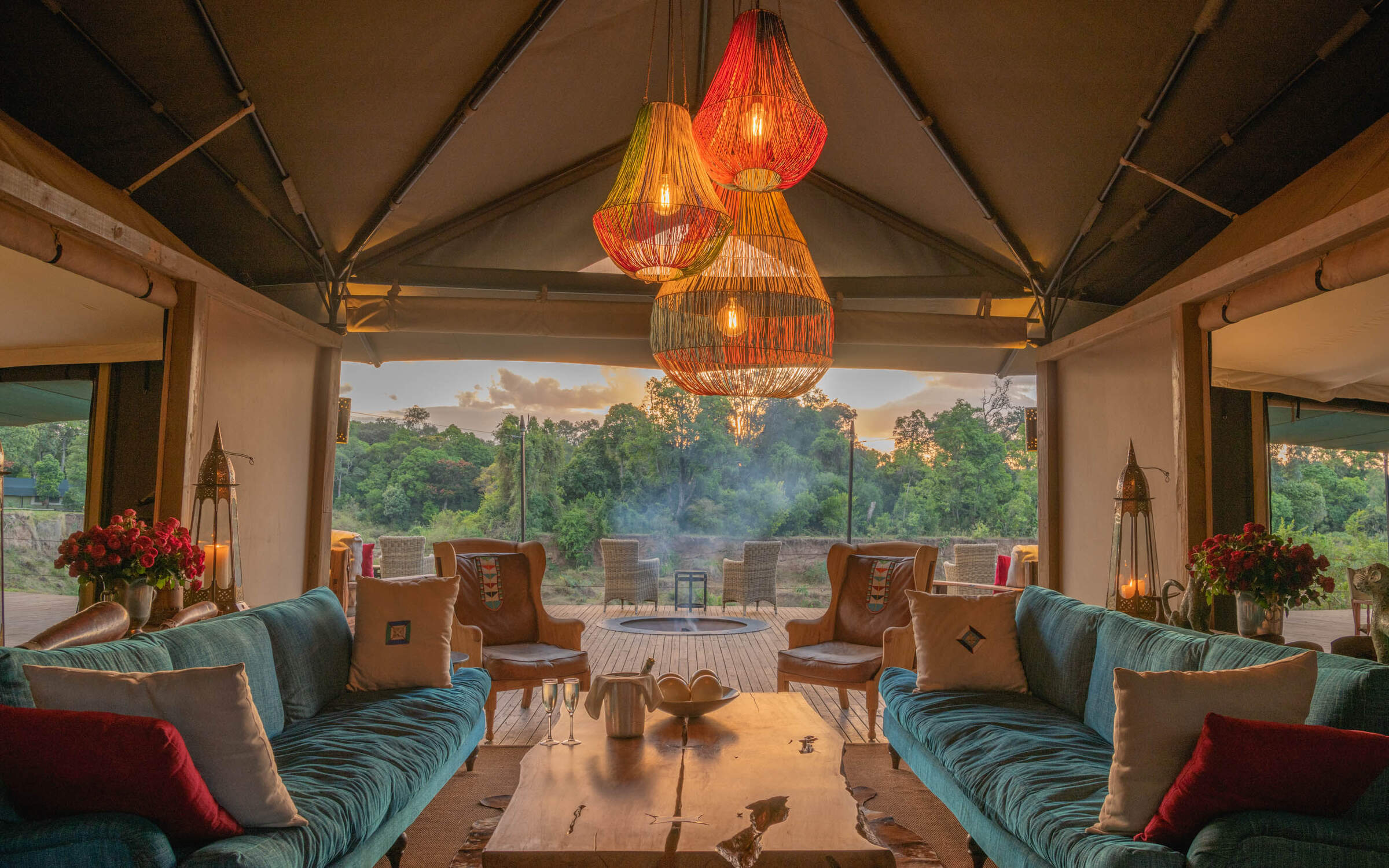
Governors' Il Moran
The smallest and most expensive of the three camps in the Governors’ group, Governors’ Il Moran Camp hugs a meander of the Mara River just 1km north of the main Governors’ Camp.
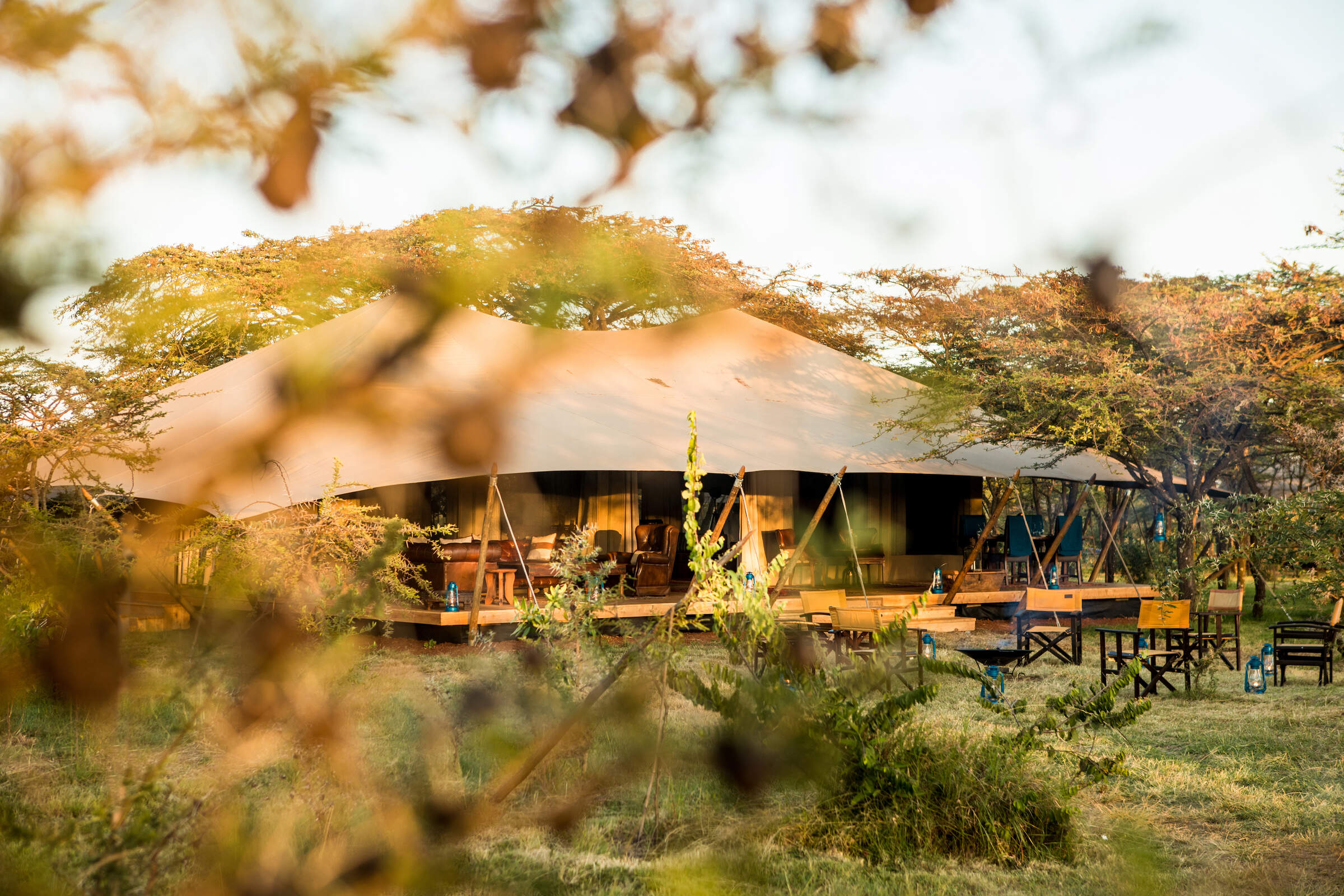
Mara Expedition Camp
Mara Expedition Camp is a small luxury camp located in a slightly elevated area of bush and woodland, just outside the Maasai Mara National Reserve.
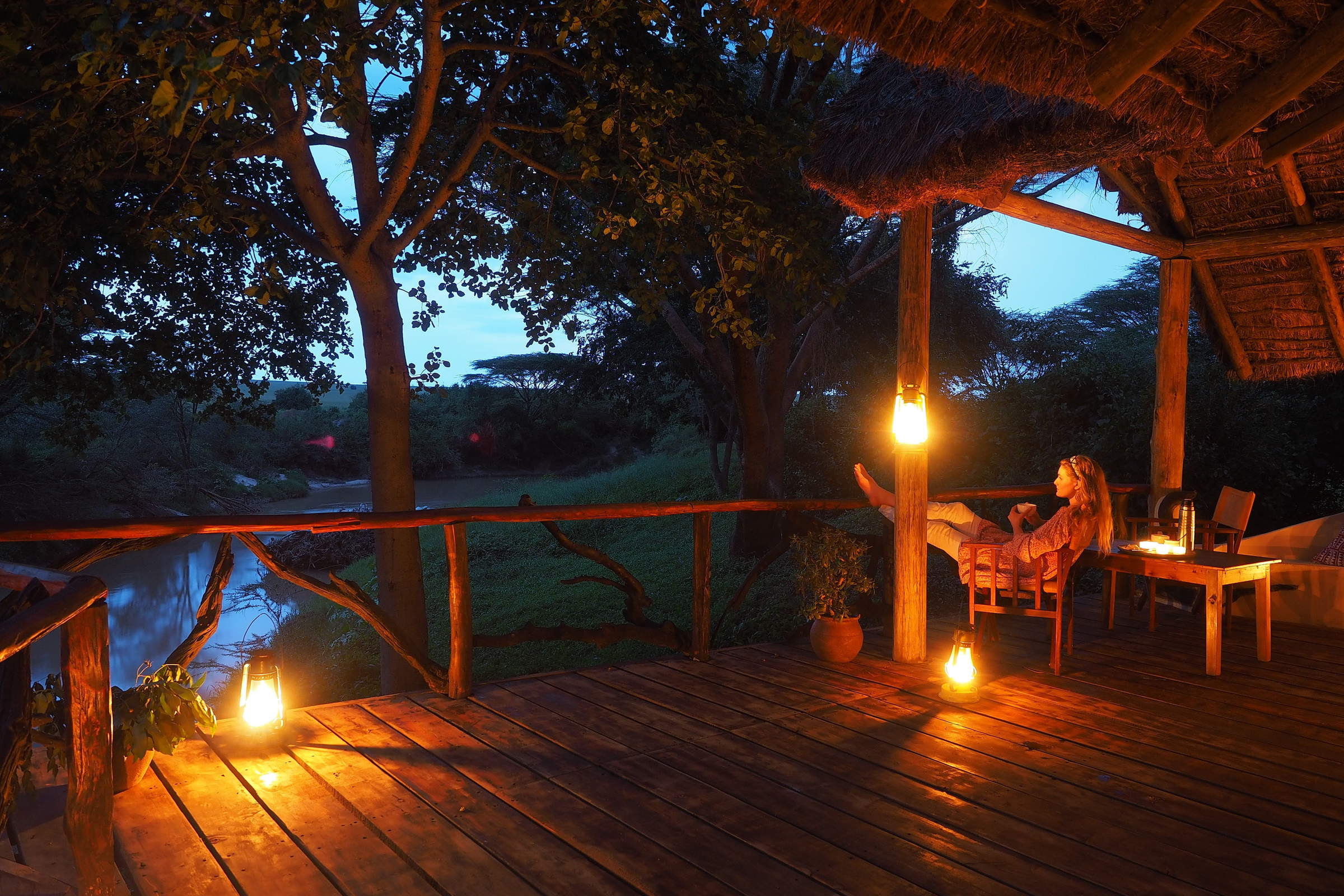
Basecamp Maasai Mara
Basecamp Maasai Mara is a family-friendly, award-winning eco-camp on a U-bend on the north bank of the Talek River, on the boundary of the Maasai Mara National Reserve.
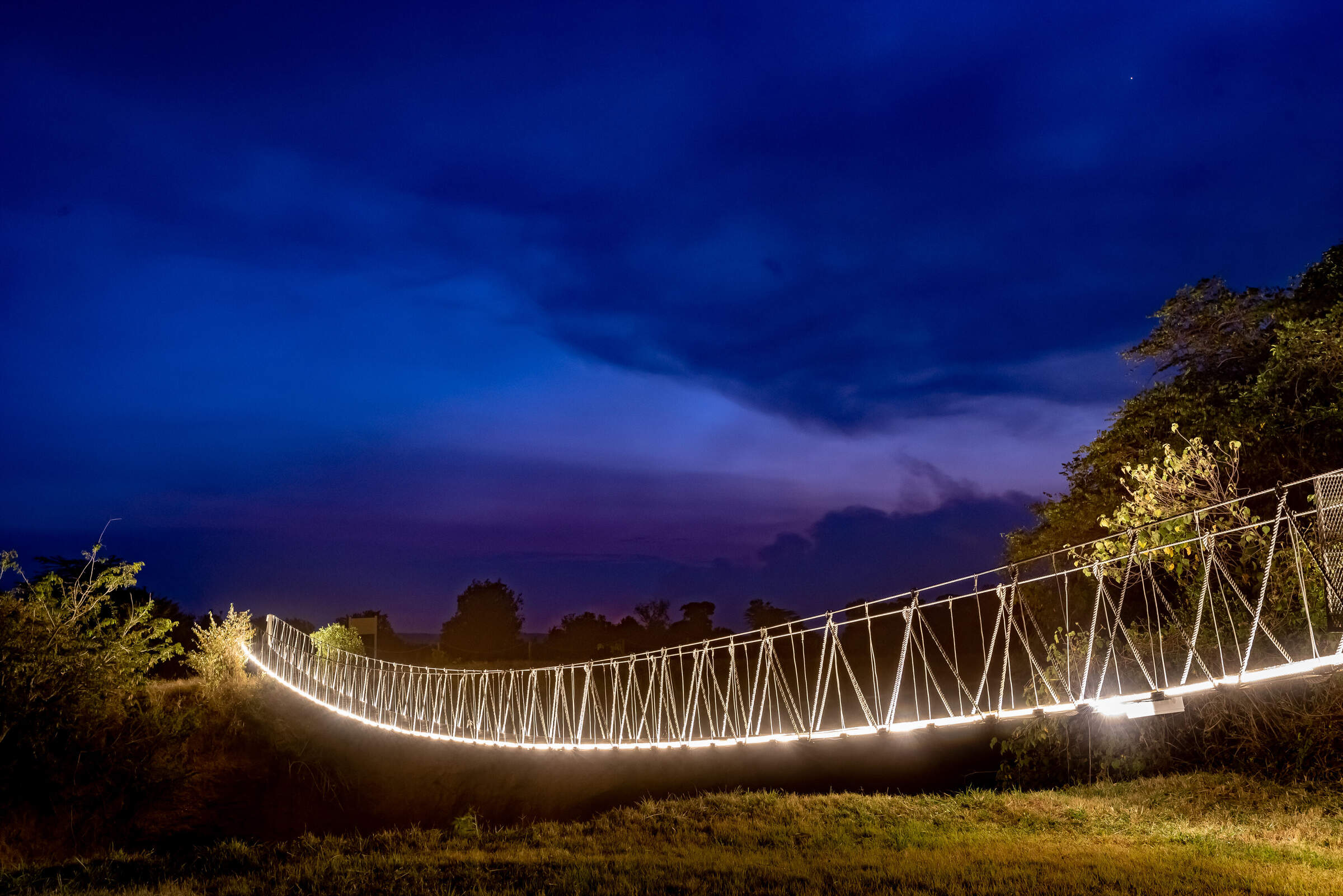
Ilkeliani Camp
Ilkeliani Camp is a smart elegant camp overlooking the Talek River, on the edge of the Maasai Mara National Reserve.
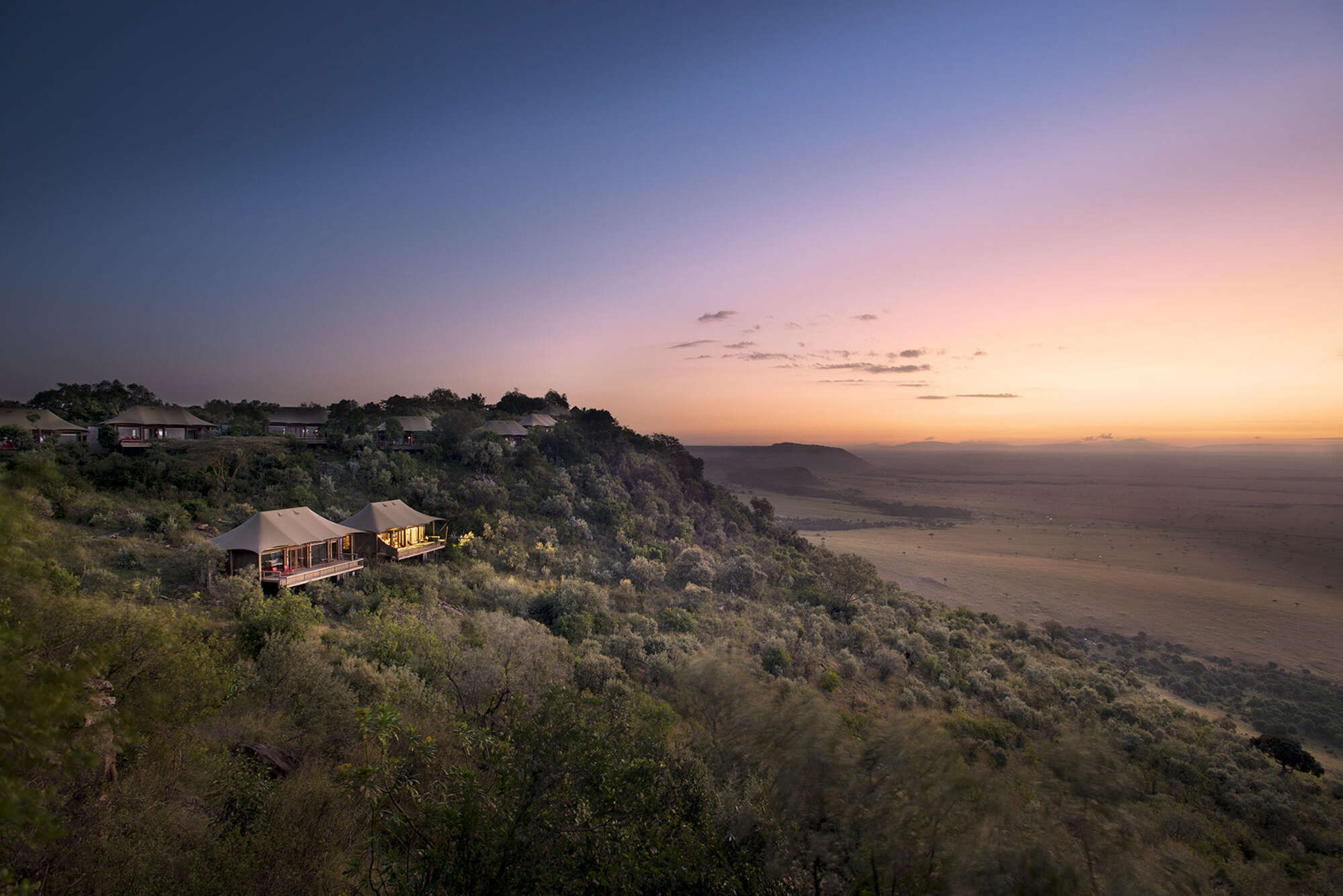
Angama Mara
Angama Mara is a top-end luxury tented camp on the Siria-Oloololo escarpment of the Maasai Mara ecoystem, just above the Mara Triangle sector of the Maasai Mara National Reserve.
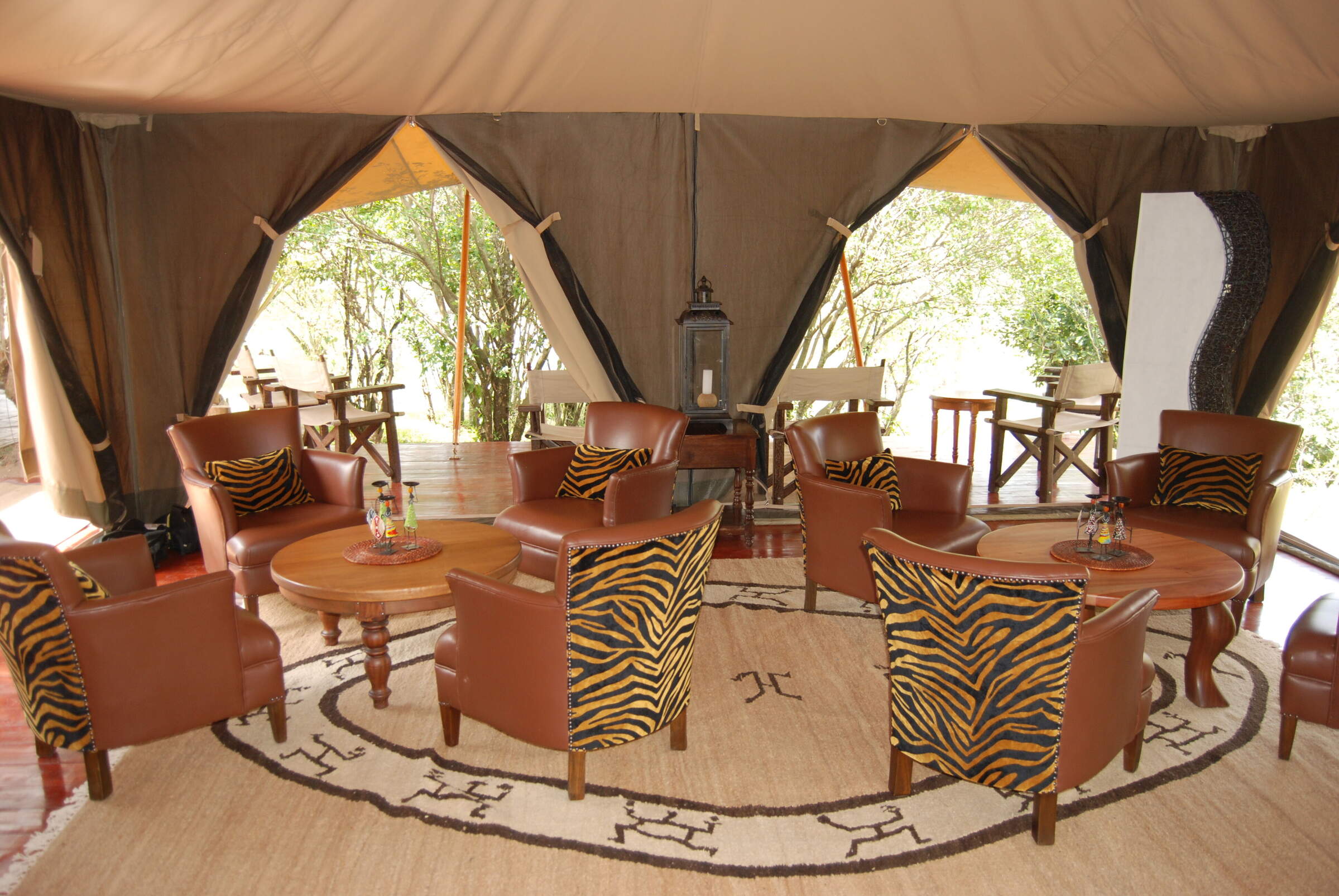
Ngenche Safari Camp
Mara Ngenche is a non-hosted, luxury tented camp with an antique style, which is perfect if you're looking for private dining while staying somewhere small and personal.
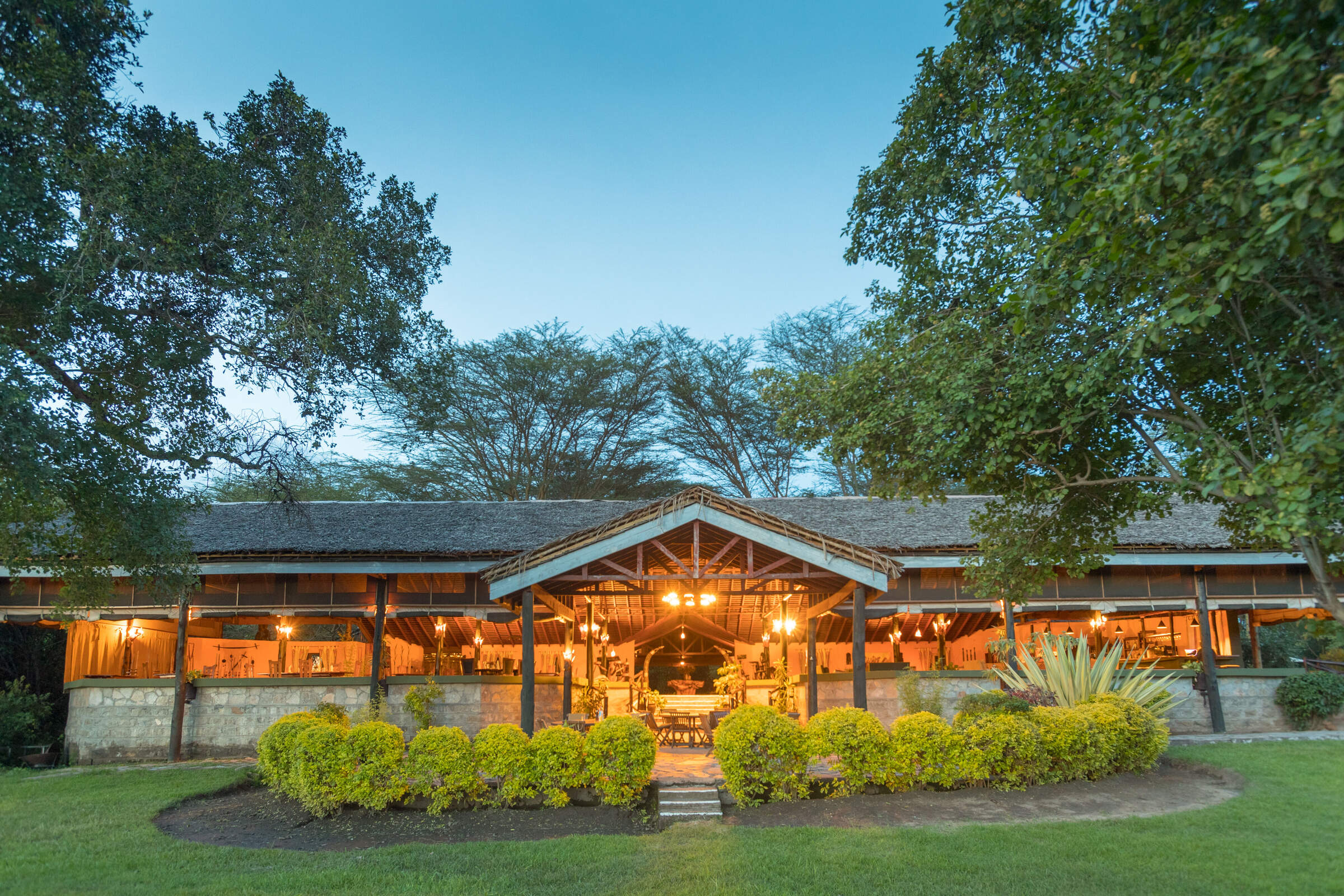
Tipilikwani Camp
Tipilikwani Mara Camp is a larger, mid-range tented camp offering good value from its base on the Talek River just outside the Mara National Reserve.
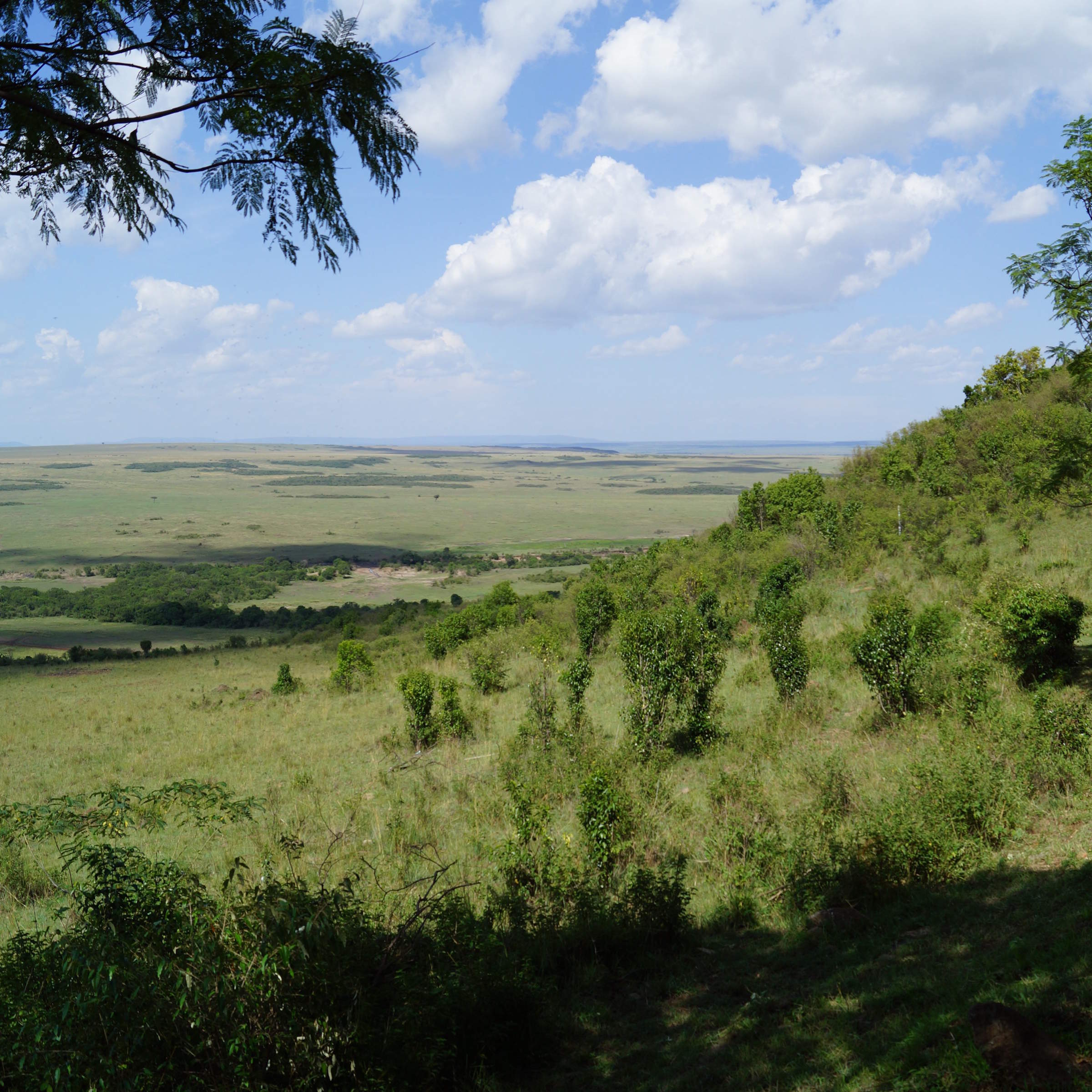
Mara Serena Safari Lodge
Mara Serena Safari Lodge is a large safari hotel with views of the Mara River, in the Mara Triangle sector of the Maasai Mara National Reserve.
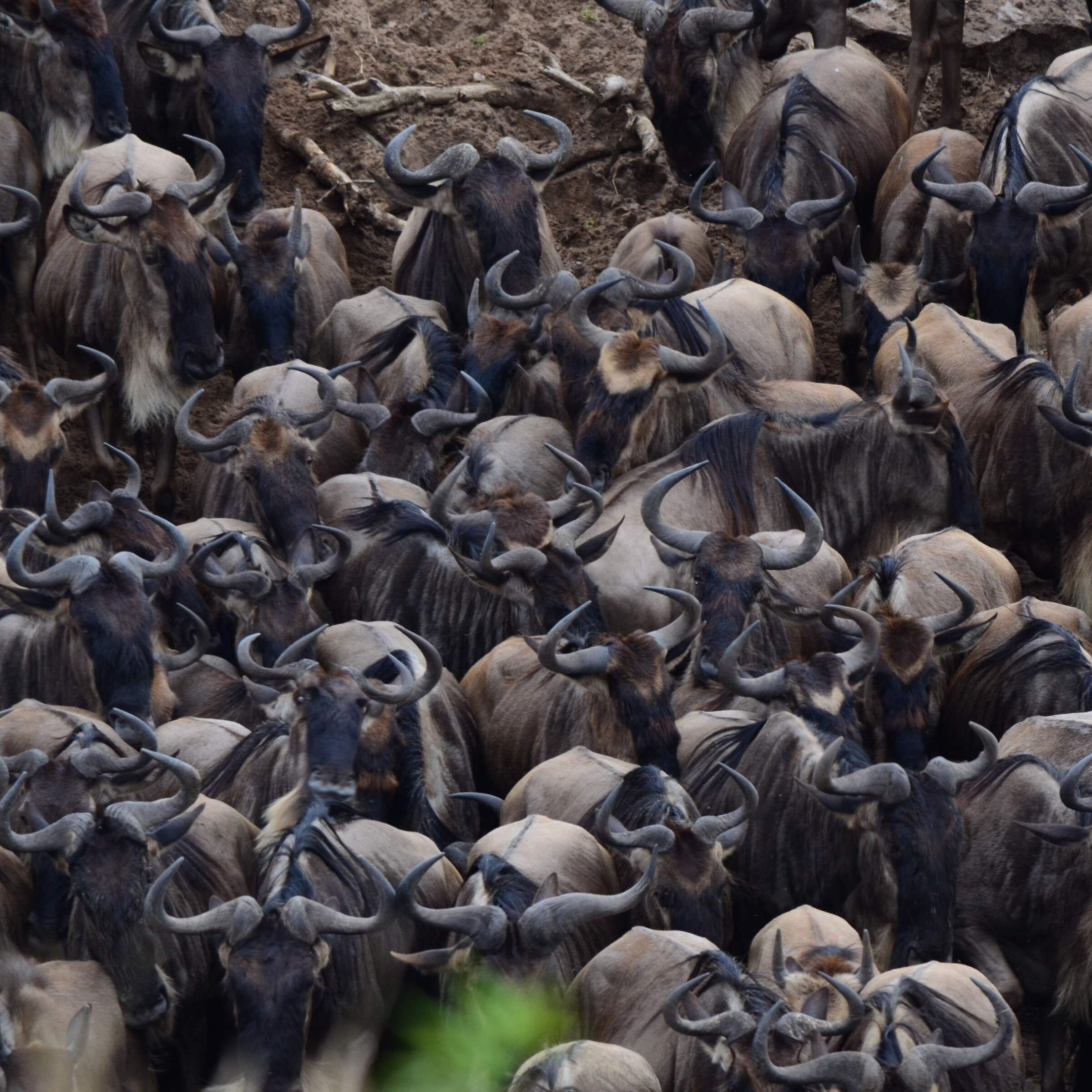
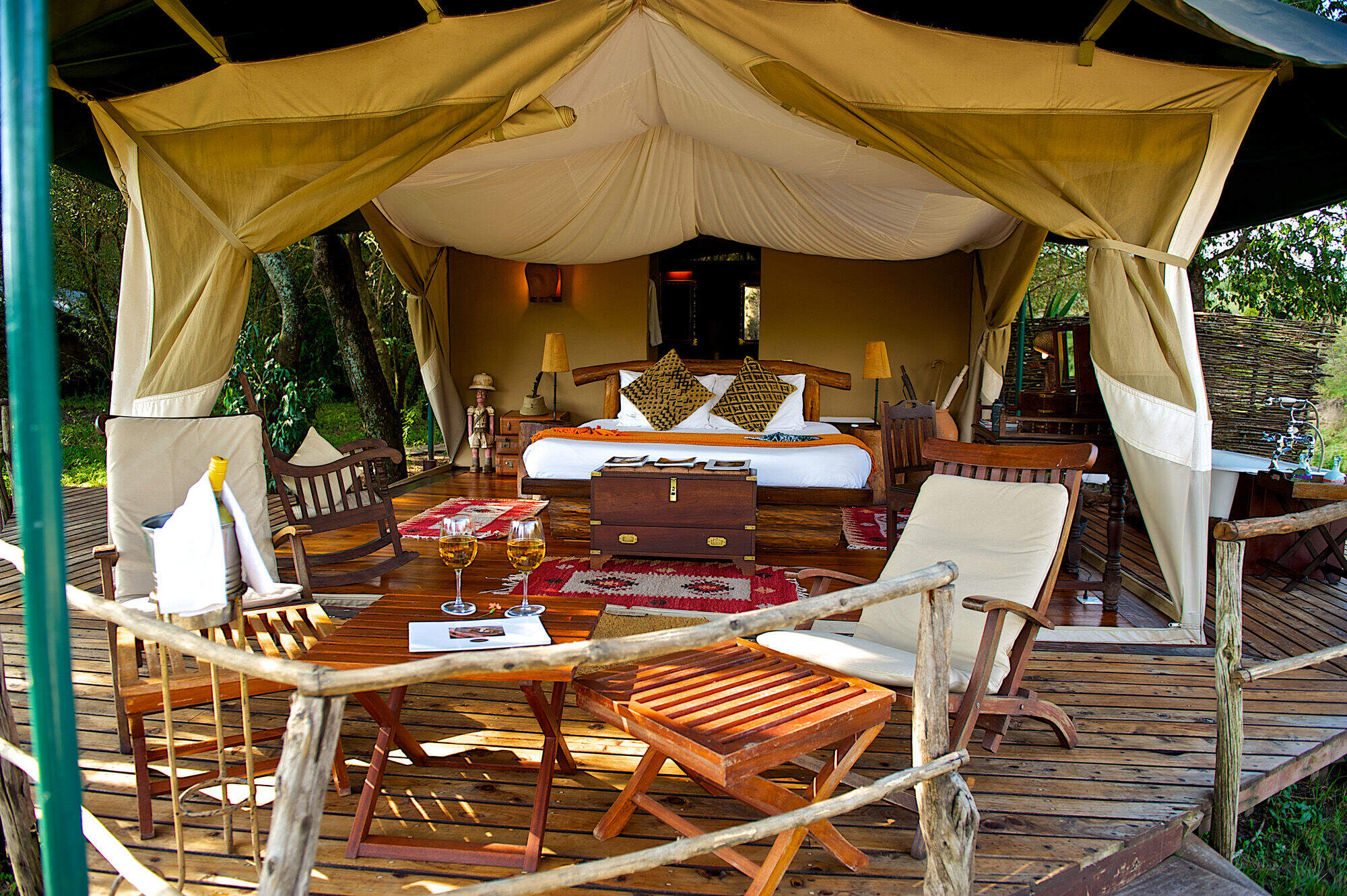
Mara Explorer Camp
Mara Explorer is a smart tented camp is in a scenic location on a bend in the Talek River.
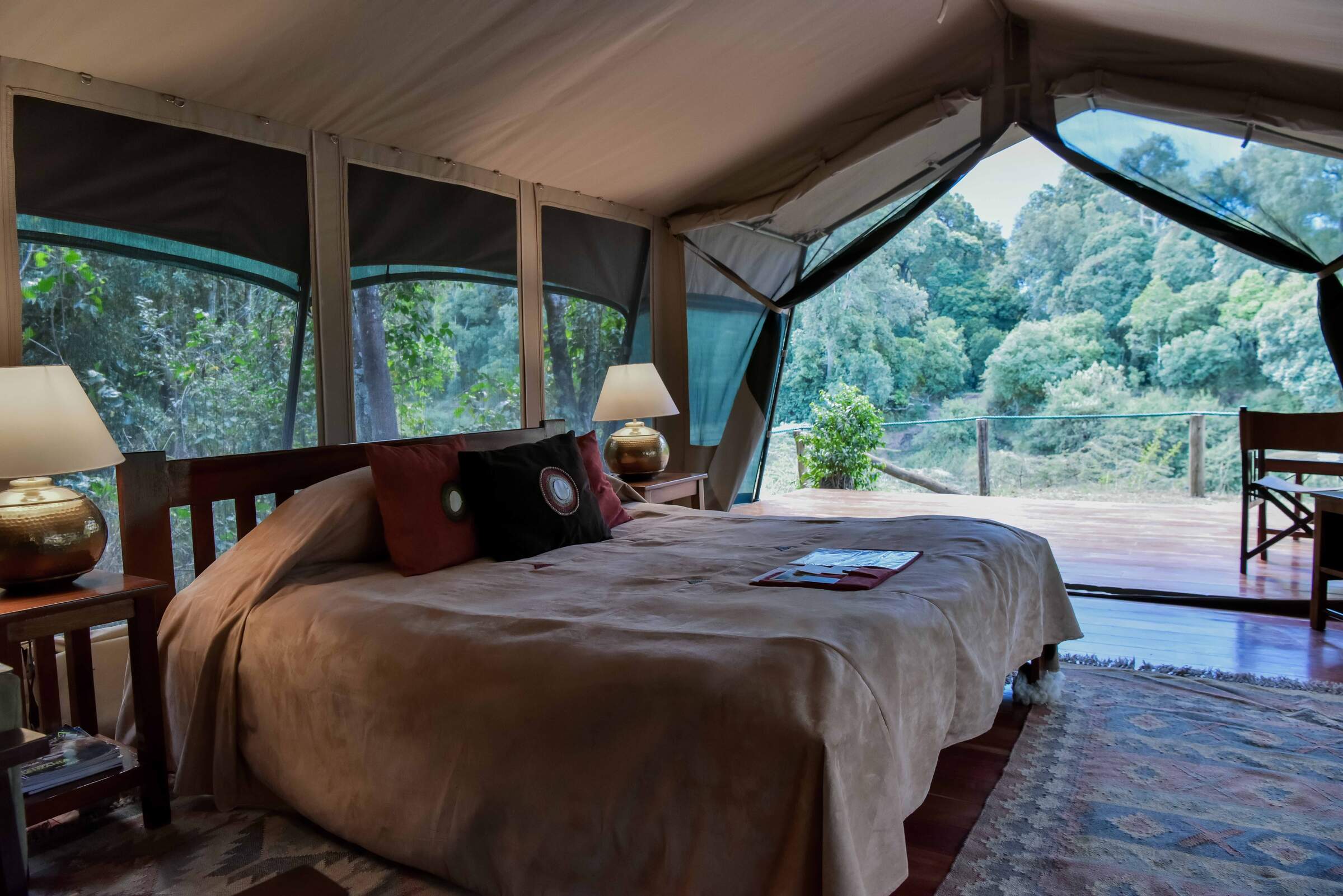
Governors' Private Camp
Located on a secluded bend of the Mara River, Governor’s Private Camp has just eight tents and is booked on an exclusive basis.
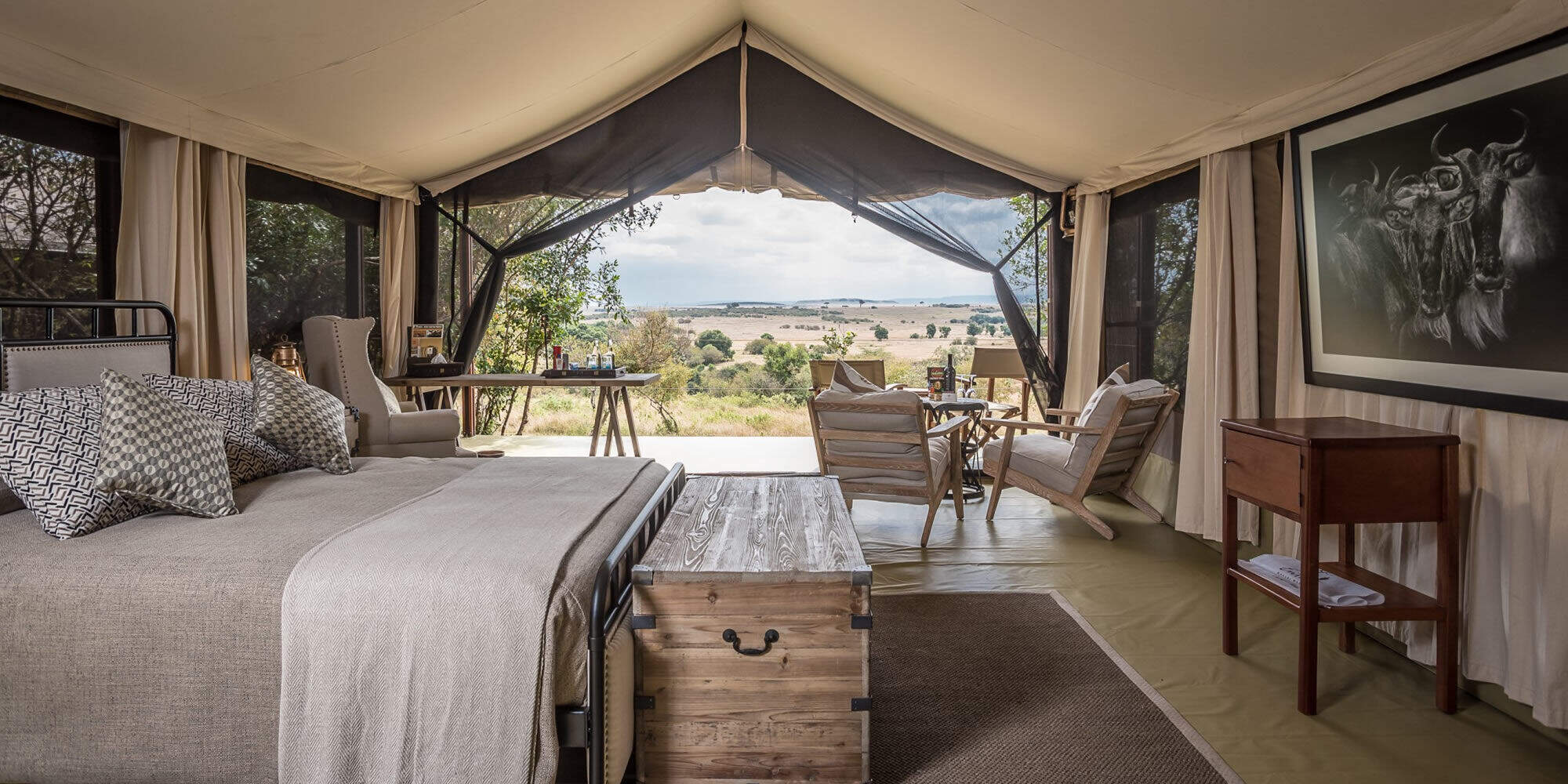
Entim Camp
Entim Camp is well located in the heart of the Mara National Reserve, offering traditionally styled tented accommodation.

Naibor Camp
Naibor has a great location in the Mara reserve, and offers accommodation to suit different budgets, with stylish high-end tents and some simpler ones too.
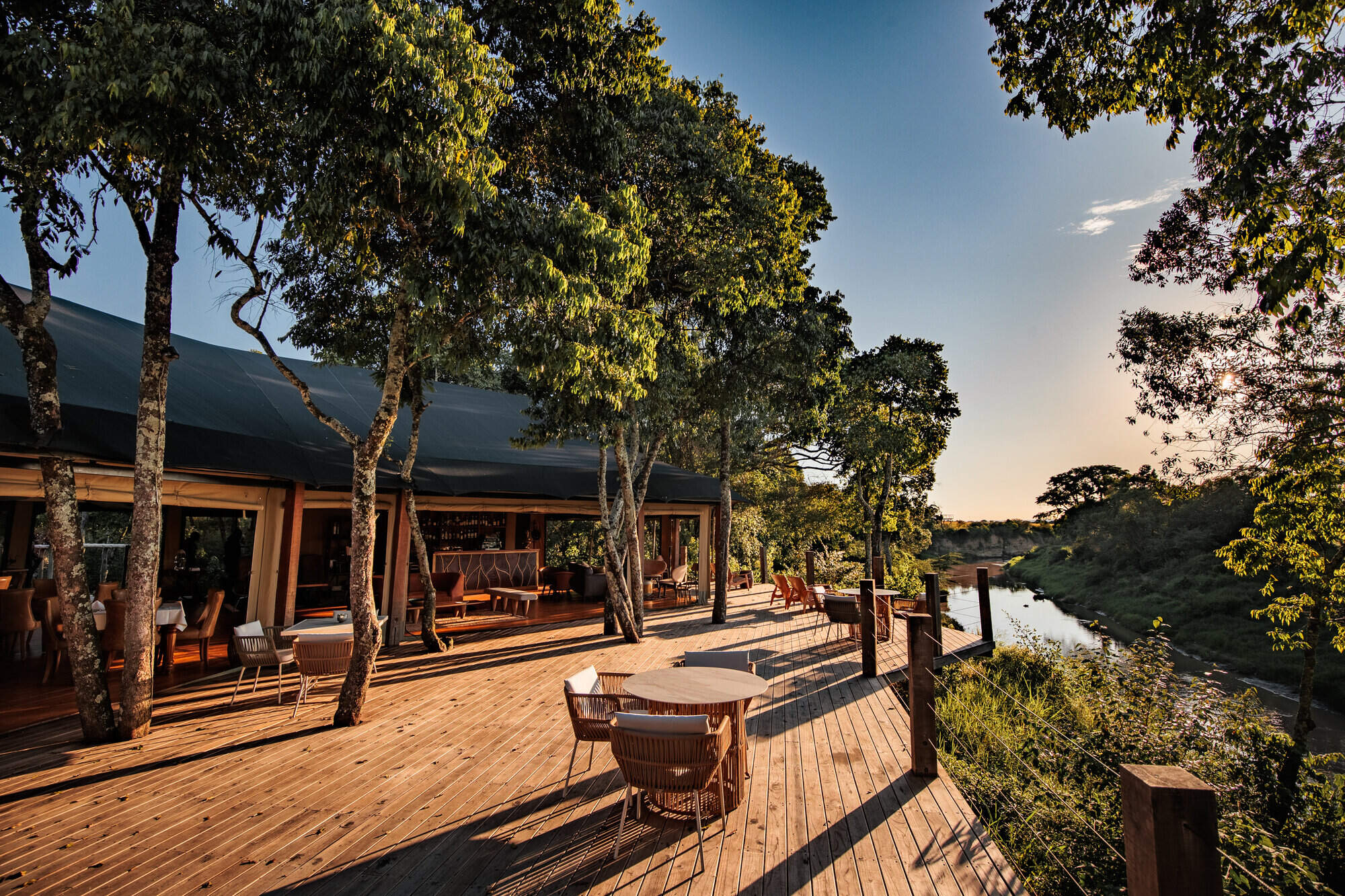
Ishara
Ishara is a highly luxurious safari camp in the Maasai Mara, located on the Talek River, which is one of the best areas in Kenya for wildlife.
When to go to Maasai Mara National Reserve
Our month by month guide: What it's like to visit Rekero in Maasai Mara National Reserve
Jan
Feb
Mar
Apr
May
Jun
Jul
Aug
Sep
Oct
Nov
Dec
Kenya in January
Clear, hot days and warm nights make this high season a popular time for safaris and it’s also good for diving and snorkelling as water clarity is excellent and gets better as the dry season progresses. Most lodges and tented camps treat January after the New Year week is over, as mid-season, making it a good compromise in terms of value for money with reasonably reliable, dry weather and some greenery left in the landscape.
Expert Africa bases its description of climate and weather in January, like the other months of the year, on the climate records of roughly the last 100 years, and it's fair to say that the weather and seasons since the beginning of this century have been highly irregular and unpredictable.
- On average, January is the second driest month of the year
- Elephants dig waterholes in the dry riverbed in the Samburu reserve.
- Wildebeest and many antelope have their calving season, to February.
- Migrant birds are seen in huge numbers, especially in the Rift Valley.
- Sea water clarity around the coral reefs generally good.
Our view
Fantastic: the very best time to visit
Weather in January
Kenya in February
With the short dry season well established, the grass grazed down and wildlife gathering close to water points, this is still a good time for a safari. Good water clarity in the Indian Ocean's coastal waters makes for excellent diving and snorkelling conditions.
Expert Africa bases its description of climate and weather in February, like the other months of the year, on the climate records of roughly the last 100 years, and it's fair to say that the weather and seasons since the beginning of this century have been highly irregular and unpredictable.
- On average, February is the driest month of the year.
- It’s sometimes possible to swim with whale sharks at Diani Beach.
- Migrant birds are still seen everywhere, especially near water.
- This is usually peak calving season for wildebeest and many antelopes.
- This month is often the hottest of the year, especially on the coast.
Our view
A very good time to visit
Weather in February
Kenya in March
Hot, increasingly humid weather – with good diving and snorkelling conditions at the start of the month – gives way to rains and lower accommodation costs. Expert Africa bases its description of climate and weather in March, like the other months of the year, on the climate records of roughly the last 100 years, and predicting the seasons since the beginning of this century has been difficult.
March is the month when – traditionally – intensely hot conditions build up until a cloudburst finally happens at the end of the month or in early April, to relieve the humidity. As ever, regional variations across the country can greatly impact on visitors' experiences.
- Sea-water clarity is best for diving before the long rains start.
- Visitor numbers are low, though the Easter holidays can be busier.
- Night skies can be scintillatingly clear in early March.
- Cropped down savannah grasses can make it easier to see the wildlife.
- Temperartures climb high, especially at lower elevations.
Our view
A good time to visit, with pros & cons
Weather in March
Kenya in April
April sees the full onset of the southeast monsoon wind or kusi, which heralds the long rains. Temperatures drop soon after the rains are established and you’ll often have facilities largely to yourself in this more affordable low season, sometimes known as the "green season". The bush quickly springs to life, with greenery sprouting almost before your eyes. While you're likely to get a fair number of heavy showers, the breaks in the rain can yield sparklingly clear conditions.
With the dust settled and bright sun piercing the clouds, conditions can be sublime for photography, especially first thing in the morning or in the late afternoon with another storm brewing. You may be lucky, or you may find conditions very wet and muddy.
- A wet month, the coast often gets more than 300mm (12in) of rain.
- Sunny spells can provide great light for photography.
- Buffalo and zebra calving season often happens in this month.
- Baby crocodiles hatch, for example on Central Island in Lake Turkana.
- Palearctic migrant birds gather to fly north to breeding grounds.
Our view
A time to avoid if possible
Weather in April
Kenya in May
While game viewing can be trickier as vegetation runs riot, between the cloudbursts the colours and light are great for photography at this time of year. Expert Africa bases its description of climate and weather in May, like the other months of the year, on the climate records of roughly the last 100 years, and while it's reasonable to expect heavy rains in many parts during this month, especially on the coast, the rains don't always come evenly or in some areas come at all.
In an El Niño year, the so-called long rains that normally are established across much of the country by May can be meagre, to the despair of farmers. On the other hand in a La Niña year, the long rains can bring floods. On the coast, the monsoon winds make the climate much more predictable, with heavy rains common throughout this month.
- Frogs breed in the ponds in the Arabuko Sokoke Forest near Watamu.
- Wildebeest, impala and other grazers are in rut (the breeding season).
- Kilimanjaro looks its best as heavy rain falls as snow on the summit.
- There's a sharp peek of rainfall on the coast with many rainy days.
- Accommodation prices are uniformly low, while some camps close.
Our view
A time to avoid if possible
Weather in May
Kenya in June
The rains give way to cloudy, cooler weather, often making for comfortable conditions by the end of the month, especially in the highlands. Starting from mid-June or the beginning of July and running until the end of October, this is the high season, and accordingly has higher accommodation rates and – at least until early September – higher numbers of visitors.
While the early part of June can often be rainy on the coast, it can be a great time to go on safari, with fresh greenery, many young animals and good photographic conditions with clear air.
- The Taru Desert, inland from the coast, is carpeted with flowers.
- The Lake Turkana Cultural Festival is held in Loiyangalani.
- Madaraka Day (commemorating self rule) is 1 June.
- The annual Lewa marathon runs a course through the wildlife.
- The Diani Rules "sports" event rips up the rulebook at Diani Beach.
Our view
A good time to visit, with pros & cons
Weather in June
Kenya in July
Kenya’s “winter" season sets in (winter is a misnomer but locals feel the change), and the highlands can be rather grey. Skies are often cloudy and the days can be surprisingly cool, with an average daytime high in many highland safari areas of 15-20°C and night-time temperatures dropping below 10°C in Nairobi and the highlands. Lower parts of the country and the coast are usually warm and dry, typically reaching highs of around 25°C with lows in the high teens.
As this is the start of the high season, coinciding with the usual arrival of the wildebeest migration in the Maasai Mara, July is a busy month. Ask your Expert Africa specialist to advise on how to avoid the crowds, which is not that difficult to do.
- The wildebeest migration usually reaches the Maasai Mara in July.
- Simbi Lake (Kisumu) and Crater Lake (Naivasha) can attract flamingoes.
- Watersports start to pick up and some surfing is possible at Malindi.
- Afternoon thunderstorms are a common feature in the Maasai Mara.
- The sea can be choppy along the coast, making diving difficult.
Our view
A good time to visit, with pros & cons
Weather in July
Kenya in August
The Great Migration fills the plains of the Maasai Mara, and school’s out, so the park roads are full of tourists – ask your Expert Africa specialist for advice on crowd avoidance tactics. Choose a private conservancy rather than a public national park or national reserve for quieter conditions.
Like July, August is generally mild and relatively dry in the safari areas, but it can be very chilly in the highlands, even in the middle of the day, and hail occasionally falls above altitudes of around 2,400m (8,000ft). Nairobi can be disappointingly overcast, with low cloud.
- Apart from Christmas holidays, this is the busiest month of the year.
- Late August sees peak wildebeest drama at the Mara River crossings.
- Coastal winds are good for kite- and wind-surfing.
- Few mosquitoes are around at this generally dry time of year.
- The annual Camel Derby takes place in the Samburu capital, Maralal.
Our view
A good time to visit, with pros & cons
Weather in August
Kenya in September
The skies clearing of cloud signals the start of hot, dry weather with little chance of rain – and, after the first few days of the month, far fewer visitors – making the latter part of September a good time for a quieter safari. While early September is often good for dramatic migration crossings along the Mara River, you might consider deliberately postponing your trip until later in the month, when the migration can still be very impressive and visitor numbers fewer.
If tourist surges are somewhat predictable, however, the patterns of the wildebeest migration are more volatile, and like all of Expert Africa's climate and weather assessments, they are based on accumulated years of experience rather than guaranteed certainty.
- This is still high season, with prices to match.
- Many river crossings take place on the Mara river in both directions.
- Natural bush fires flush out insects and small animals for predators.
- The Rift Valley Music Festival takes place by Lake Naivasha.
- With school holidays over by early September, late-month is quieter.
Our view
Fantastic: the very best time to visit
Weather in September
Kenya in October
Still hot, mostly dry and not too busy, this is many people’s preferred month for a safari, and it’s also good for diving and snorkelling. The wildebeest and zebra herds of the great migration are often still to be seen, though in dwindling numbers. The swamps of Amboseli attract thirsty wildlife including large herds of elephants.
While we wouldn't expect much rain across most of the country this month, the climate has become so unpredictable that you can never say never, and the possibiity of the short rains – usually associated with November to mid-December, starting early, can't be discounted.
- This month sees the tail end of the great migration in the Mara.
- Palearctic migrant birds start to arrive, staying until March.
- Turtle nests hatch at Watamu, until November.
- Amboseli elephants focus on the swamps for their daily water.
- The Indian Ocean monsoon winds turn from southeast to northeast.
Our view
A very good time to visit
Weather in October
Kenya in November
The northeast monsoon wind or kaskazi heralds the start of the “short rains", usually some time in the second half of the month. From November to mid-December, this is the low season, and accordingly has lower accommodation rates and lower visitor numbers. Across most of the country you can expect warm, somewhat cloudy weather, with occasional heavy showers and localised flooding.
Expert Africa bases its description of the climate in November, like the other months of the year, on the records of roughly the last 100 years, and it's fair to say that the seasons since the beginning of this century have been highly irregular and unpredictable: some years the short rains don't come at all, or don't reach every part of the country. In an El Niño year, the November short rains can be very heavy, but in a La Niña year, they can fail completely.
- Swimming with dolphins in Lamu can be done from now until April.
- Birders gather at Ngulia in Tsavo West to ring Palearctic migrants.
- The Lamu Cultural Festival takes over the town and Lamu Creek.
- Agricultural shows often take place regional market towns.
- This is low season, so camps can be great value, with special offers.
Our view
A good time to visit, with pros & cons
Weather in November
Kenya in December
In a typical December, the rains usually finish by middle of the month, leaving the landscape looking its best, under clear blue skies, and heralding the start of the second peak tourist season from around 20 December to the first week of January. Our assessment of the likely weather in December, like the other months of the year, is based on climate records, and it's fair to say that the seasons since the beginning of this century have been highly irregular and unpredictable.
Christmas can sometimes be wet, but most years the rains have finished a week or two earlier, with the festive season ushering in the perfect combination of clear skies and sunshine by day and starry nights.
- Christmas and New Year are busy, with the lodges and camps full.
- Rates are highest after 24 Dec, with supplements on public holidays.
- Republic Day and Independence day are celebrated on 12 December.
- Good kite- and wind-surfing restarts, with strong northeasterly winds.
- Mango season begins, providing excitement for primates and elephants.
Our view
A good time to visit, with pros & cons
Weather in December

Looking for inspiration on where to travel next?
Visit our trip chooser to explore your options and find inspiration for your perfect African adventure
Inspire me